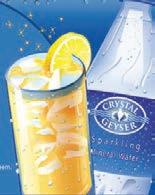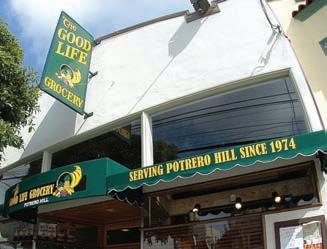Happy Birthday, Social Security





In the midst of the City’s budget crisis, a recently issued Recreation and Park Department (RPD) press release tried to put a cheery spin on program and personnel cuts to neighborhood parks, including at the Potrero Hill Recreation Center (Rec Center), located at Arkansas and 22nd streets, and Jackson Recreation Center (Jackson Park), at Arkansas and 17th. The press release quoted RPD general manager Phil Ginsburg, who pointed to the “unprecedented” $12.4 million his department was forced to slash this fiscal year. Ginsburg praised his department’s “creativity” in responding to the cuts, which prompted “new revenue proposals,” “high-performing recreation models” and the adoption of “best practices.”
The Parent-Teacher Associations (PTA) of two Potrero Hill elementary schools raised record amounts last year. Daniel Webster Elementary School’s PTA collected roughly $45,000, ten times what it raised the year before. Starr King Elementary School’s PTA raised approximately $100,000, four times the previous year. These schools joined dozens of other PTAs located throughout the City, which raised a collective $5 million to pay for school supplies, extra teachers, and learning activities.
“We’ve come a huge long way,” said Dena Fischer, president of Daniel Webster’s PTA, which is just two years old. Fischer’s twin sons, Henry and Sam Rothenberg, are first graders in the school’s Spanish immersion program. According to Fischer, a portion of last year’s money went to a popular world drumming and music series. The weekly program

started for kindergarteners in 2008, with parents paying out of pocket. Last year the PTA paid to expand the program to all grades. The PTA
see PTa page 8
As a result of the budget cuts, the department will direct its resources to the City’s 25 full-service park facilities, two of which are located on Potrero Hill: the Rec Center and Jackson Park. RPD managers will focus on five areas of “recreation competency.” Each recreation center will be staffed by a facility coordinator, responsible for managing day-to-day operations, and a program coordinator, “to ensure robust programming...active and exciting recreation activities that you’re looking for... are delivered at your facility,” according to the press release. The new staffers will “part-

ner with neighborhood leaders serving on a seven-member Community Recreation Council to ensure that relevant programming and events are provided at your site.” Despite repeated attempts by the View, RPD didn’t respond to questions related to how funds will be allocated, how council members will be selected and other details about the new management approach.
RPD’s announcement prompted a strong response from some long-time park advocates. “Lies, lies, nothing but lies,” said park user, activist and artist Carla Eagleton, who is skeptical of the department’s new structure and abbreviated program offerings. Eagleton believes that RPD’s revised staffing arrangements don’t match with Potrero Hill’s needs. According to Eagleton, RPD has a history of ignoring locals, “telling us one thing and doing another, or not telling us anything at all.”

RPD’s press release promises “great recreation programs...youth [and] adult sports, visual and performing arts, child development activities, after-school programs, senior recreation...outdoor adventuring and more.” But the department’s summer 2010 program catalog showed that few programs were held at the Rec Center compared to other City parks. The summer offerings included youth baseball, making
see Rec PaRk page 10

Here’s a tale of a wonderful adventure in our very own neighborhood. A search for one of the best treats on earth: chocolate chip cookies. My day isn’t complete unless I have a bite of a baked fistful of sweetened dough, embedded with morsels of deep brown flavorful ecstasy. It’s a moment I look forward to, mourn when it’s passed, and remember fondly, particularly when I discover a crumb or two lingering on my moustache.
Not just any cookie will do. I need that doughy goodness to have a satisfying texture; a deep, rich fla-
vor; the right mix of sweetness, tartness and saltiness; not to mention a pleasing after-taste. Though I’ve cookie-tasted my way through cafes, delis, bakeries and grocery stores throughout San Francisco, life would be easier if I could make a local buy; if I could score from a connection where I live. Certainly the perfect chocolate cookie can be found on the Hill. The hunt is on!
bakery. It’s not surprising that the cookies sold there – each at 2.5 ounces, for which the young counterwoman collects $2 – are trucked over from Glen Park. That’s where Destination Cookie bakes up a variety of pastries, receiving rave reviews on Yelp!: “… caramelized sticky bun to die for!”
“…feed my chocolate croissant addiction!” But what about the chocolate chip cookies? Sorry to say, the base flavor doesn’t register much above average, while the chocolate bits decline to announce themselves proudly. They
What better place to start the search than an iconic local institution: Farley’s. The place is too jammed with tables, magazines and patrons waiting in line, to accommodate a see cookie page 13
At the start of the summer fears ran high that an early end of the school year, cancellation of youth summer programs, and high joblessness would prompt a spike in crime. Idle hands –young adults, wayward teenagers, and jailed individuals who were released due to improprieties at the City’s crime lab – would become the devil’s playground. These fears were largely unrealized. With the exception of automobile burglaries, crime rates are lower now than they were in June. Crimes – murders, assaults, and robberies – were committed. But not at the levels expected.
Relative peace appears to have been maintained through a combination of factors. The Department of Children, Youth, and Family Services and philanthropists, large and small, responded to cuts to the San Francisco Unified School District’s summer schools by increasing their offerings and outreach. The San Francisco Police Department deployed its Police Athletic League, and continued its use of CompStat, its statistical analysis program, to better target police efforts. Local businesses provided summer jobs and internships. Seeing the need, our village responded.
Other factors may have had an impact. Over the past four years City Attorney Dennis Herrera has imposed four civil gang injunctions – including against the BayviewHunters Point-based Oakdale Mob – naming seven different criminal street gangs. The injunctions bar named gang members from engaging in intimidation, graffiti vandalism, and associating with other gang members within a designated safety zone, defined as the neighborhood

in which the gang members typically hang-out. Last month Herrera proposed another injunction against gang members operating in Visitacion Valley. The injunctios raise concerns about civil liberties, and prompt questions about whether there are other, less draconian, ways of addressing the problem. But given that several hundred bad seeds are likely responsible for most crime and almost all gun-related violence, the injunctions have probably contributed to a more peaceful summer.
Historically high unemployment rates which have kept otherwise atwork moms, dads, uncles, and grandmothers at home may have created a mixed-blessing. Households are getting by on slender income dominated by unemployment checks, food stamps, and pantries. But householders have more time to spend watching over the children. It’s one thing when everyone under 25 is unemployed and hanging on the streets, and quite another when the teenagers and young adults are joined by their more responsible elders. There’s no evidence of this phenomenon, and it’s less likely to be true for communities, especially Asian-Americans, which have always relied on extended family networks for child raising. But it’s a plausible theory.
Regardless of the reasons, our quiet summer provides an opportunity that should be seized upon. Our youth and young adults remained on the right path. Let’s help them stay there, by providing them with education, training, recreational programs, and, ultimately, and jobs. Next year’s budget cuts look to be even worse than this year’s. Let’s circle our wagons around our young people.
Editor,Congratulations on 40 years! How exciting!
I grew up on the Hill, and have been reading your paper for ages, though I now live in Glen Park. In your 40th anniversary issue, the second to last page has a photograph of some kids with a goat – when they were still there – from 1984. In that shot is me, my older sister, and another family friend. I remember that day well. It was so exciting to see our picture in your paper.
Alyssa Terry Potrero Hill resident, 1981-1989 Editor,
Thanks for remembering us at Atchison’s Pharmacy in your 40th anniversary issue. We wish our late employees, Rena, who worked at the post office, and Barbara, who was one of our clerks, would have been around to see this edition. We miss the interaction with all our customers, but don’t miss the bureaucracy that now runs the health care industry.
Bernice and Cliff Wong Editor,Thank you for the wonderful evening in honor of the View’s 40th birthday. It did wonders for my mom, Ruth; she was glowing all through the night. The moment she received the standing ovation nearly brought me to tears!
Marc Passen El Granada
Editor,
I want to thank you for a great 40 year celebration. My Aunt Mary Horton and I had a great time. Mary has lived on the Hill all of her life. My family moved off when I was a teenager, but I have always kept in contact with the neighborhood. I occasionally pick up the View when over there. I remember when it first came out, and the pride I felt, and still do, with the publishing of this neighborhood-friendly newspaper! Thank you, and all of your staff for your dedication!
Vickie Van Winkle
P.S. I’m also part of the Potrero Hill Baby Boomers. This year we’re not having a big bash, but just a simple picnic. It will be September 25th at Orange Park in South San Francisco. More information: http://potrerohillreunion.page.tl/
Editor,
Last month at 18th and De Haro streets, I saw the occupants of a midsize brown/black Chevy pickup truck going through parked cars. I’ve lived on the hill off and on since 1985, and this episode gave me déjà vu. This neighborhood has been burglarized enough. Let’s keep our eyes open, and be our brother’s keeper. Please keep each other informed as to the frequency and location of all future vehicle burglaries.
Will Scott
I got a chuckle last month out of the antics of Steven Slater, JetBlue’s famous – or infamous – flight attendant, who, by popping the inflatable on his aircraft and sliding his way to unemployment, has given the expression “drama queen” new meaning. I do sympathize with him having to deal with too many arrogant, ignorant, or simply inconsiderate people. It reminds me of too many San Franciscans. I wish we could all be more thoughtful in our crowded City, driving, cycling, or walking. Potrero Hill is somewhat stuck out here in our own little existence, but we still have to travel the other 40 some odd square miles.
Last month I returned from the funeral of my stepsister Ann. She had a stroke in early July, and died peacefully at home on August 1st. Ann was 79, the second of my three stepsisters to die this year. She was active in her local mental health community, and warranted a 14 column inch obituary in the St. Louis Post dispatch. Her six kids kept everyone up to date with a journal on www. CaringBridge.org, a free site “Connecting Family and Friends When Health Matters Most.” Her site had more than 800 visits, which saved the
family answering many hundreds of phone calls during her illness.
Ann was the fourth relative or friend to die this year after short illnesses; scary. These folks all “…had a good run.” I hope not to linger when I get sick; just be comfortable with my life and what I’ve accomplished, no matter how much that might be. I hope I’m still able to make an informed decision about my death, and that I’m allowed to make that decision without outside interference. I’ve had a good run, even though I may not have accomplished as much as others in the schools I’ve attended or people I’ve known. As one of my guiding philosophies goes, “Playing the ‘shoulda, woulda, coulda’ game is a depressing philosophy.”
And when I go, I’d like it to be like Andy, the San Francisco Zoo’s 27-year-old polar bear. According to the Zoo’s Primate and Carnivore Curator, Corrine MacDonald, “When an animal such as Andy dies…there is no memorial service, the staff and keepers grieve and mourn in their own ways.” Just get together with friends in your own City and have a party, like an Irish wake. The old joke, “The difference between an Irish wake and an Irish wedding is one less drunk.”
According to last month’s San Francisco Chronicle , McRoskey, the century-plus vendor of highend mattresses, recently moved its manufacturing plant to Minnesota Street from another San Francisco location. Not so long ago more than 1,500 companies produced products in the City, with roughly half that number currently operating. Today, San Francisco manufactures legal briefs, biotechnology breakthroughs, and virtual games. Sleep on that…And what better way to get yourself to sleep than to imbibe in a bit of malty goodness. Magnolia Brewery plans to open a small brewery and restaurant in the American Industrial Center on Third Street, next to Mr. and Mrs. Miscellaneous, and across from Serpentine. We may not be building much these days, but we sure know how to eat, drink, and sleep. Perhaps we’ve reached nirvana, and just don’t recognize it…
The Hill’s 18th Street corridor is hop-
ping, eight years after Michael Bauer referred to “white hot trendy Potrero Hill.” Besides the granddaddy of the street’s restaurants, Goat Hill Pizza – around since the mid-1970s with Phillip De Andrade managing the dough – and Aperto – first established in 1992 – comes Papito, located in the old shoe store next to RocketFish, the new Japanese place that replaced Lingba at the Connecticut Street corner. Launched by the Chez Papa crowd, Papito’s menu consists mostly of burritos, quesadillas, and tacos, in addition to other already popular specials. Don’t miss the fresh tamarind juice. The taqueria joins the other great restaurants in the two block area: Sunflower , Pera , Chez Papa and Chez
Maman , Umi , and Hazel’s. Next month Plow will plant another option in our local restaurant scene.
The City has slashed the Potrero Hill Neighborhood House’s budget, resulting in lay-offs of almost three-quarters of the nonprofit’s staff. Now’s the time to drop off a donation check, or volunteer to help local youth… FlOr de Lis, located on Connecticut Street, around the corner from Aperto , closed its retail shop last month.

The store front will be temporarily occupied by the Steve Moss for District 10 Supervisor Campaign …Alabama Street’s San Fran-
cisco Veterinarian Specialists, the City’s only veterinary practice that offers full-service care in internal medicine, oncology, surgery, and other specialties, has been purchased by VCA Animal Hospitals, a national animal care chain. SFVS had been locally owned and operated since 1997...Neighbors are complaining about late-night amplified music and associated noise emanating from Blooms Saloon, which apparently is loud enough to disturb the sleep even of McRoskey mattress owners.
The Neighbors of San Francisco General Hospital successfully defeated Assembly Bill 1272, state legislation that would have required all California trauma centers – including the one located at General Hospital – to have helipads. The group has endorsed Tony Kelly’s campaign for District 10 Board of Supervisors… Over the summer the Federal Energy Regulatory Commission (FERC)

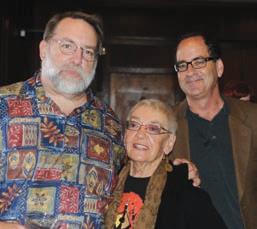
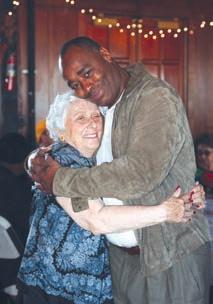
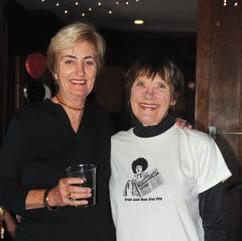
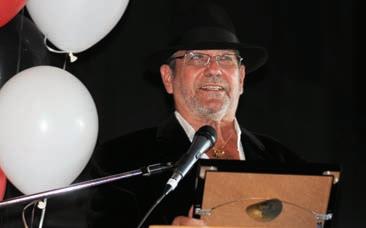
The Potrero View’s 40th birthday party attracted more than 100 community members, filling the Potrero Hill Neighborhood House (Nabe). Tasty food and supplies were graciously donated by Baked, Klein’s Deli, Goat Hill Pizza, The Good Life Grocery, Ruby Wine, Bell & Trunk and Whole Foods. The dinner buffet also included delicacies from Pera, New Spot, Rocketfish, Yvonne’s Southern Sweets and John Campbell’s Irish Bakery. Phil De Andrade MC’d the event, and local band, BRO, rocked the stage. The party wouldn’t have been possible without the help of Jean Crosby, Kayren Hundiburgh, Abigail Johnston, Melinda Lee and Lisa Tehrani.
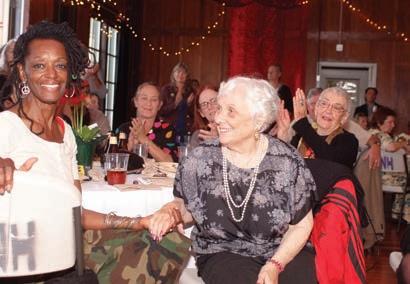
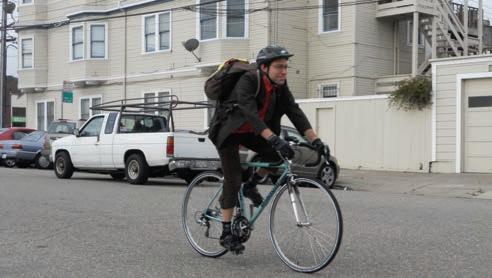
 By Sarah Mcdonald
By Sarah Mcdonald
Development of the San Francisco Bike Plan resumed last month after the San Francisco Superior Court lifted a 2006 injunction that halted new bicycle-related construction. The City adopted its first Bike Plan in 1997. Under the latest update, adopted in 2009, 31 miles of bike lanes would be added to the existing 48 miles on San Francisco’s streets over a roughly five-year period. The plan includes 14 projects in and around Potrero Hill and South of Market (SOMA).
According to a City-sponsored study, bike ridership increased by 54 percent between 2006 and 2009, with the highest number of bicyclists observed on 11th Street, which borders SOMA and has bike lanes in both directions. “Our neighborhood in part is great because it’s very flat,” said Katy Liddell, South Beach/Rincon/ Mission Bay Neighborhood Association president.
SOMA was the first neighborhood to get a new bicycle lane following the Court’s decision. Crews began striping bike lanes and “sharrows,” bike arrows indicating shared-use lanes for bicycles and cars, on Townsend Street last month. The project, which should be completed around the time this article is published, will extend both directions from Eighth Street to The Embarcadero.
“We’re really excited about Townsend being one of the first up,” said Renee Rivera, acting executive
director of San Francisco Bicycle Coalition (SFBC), a nonprofit that’s advocated for the Bike Plan’s implementation. According to Rivera, Townsend Street is important because it connects SOMA with Potrero Hill and the Mission.
New bike lanes in both directions on Illinois Street from 16th Street to Cargo Way are also expected by the end of the year. SFBC has been advocating for green-painted bike lanes on Illinois Street, following similar projects on Market and Fell streets. Painting bike lanes a different color helps reduce confusion and conflict between cyclists and motorists, said Rivera.
Other improvements slated for 2010 include bike lanes in both directions on Division Street from Ninth to 11th streets, eastbound on 23rd Street from Kansas Street to Potrero Avenue, and in both directions on Potrero Avenue and Bayshore Boulevard from 25th to Cesar Chavez streets. A bike path, a designated biking area where cars aren’t allowed, is planned for both directions on McCoppin Street from Valencia to Market streets, continuing as a westbound bike lane from Valencia to Gough streets.
The Second Street project in SOMA has been a source of contention. Slated to be developed in 2011, it’s suppose to include bike lanes in both directions from King to Market streets. According to Liddell, San
Francisco Municipal Transportation Agency (SFMTA) hasn’t conducted enough community outreach about the project. The plan would have disallowed left turns at some intersections along Second Street, which Liddell said would drive more traffic into residential areas and create dangers for pedestrians. According to SFMTA’s website, the project requires more planning. Liddell said community members will meet with SFMTA to create a better strategy. “We’re in no way shape or form against the bike plans,” said Liddell. “I’m sure we’ll come to a mutual agreement sometime in the future.”
Other bike lanes that are planned for 2011 include 17th Street from Valencia Street to Potrero Avenue, and Cargo Way from Third to Jennings streets. The latter may be a bike lane
or a bike path, and would connect to the Illinois Street bike lane via the recently constructed Islais Creek Bridge, and the Bay Trail at Heron’s Head Park in Bayview-Hunters Point.
Four new bike lanes in Potrero Hill and SOMA are also on the horizon for 2013 and beyond. Lanes are planned in both directions on Fifth Street from Market to Townsend streets, both directions on Fremont Street from Folsom to Harrison streets, westbound on Howard Street from The Embarcadero to Fremont Street, and both directions on 16th Street from Third Street to Terry Francois Boulevard. “We’re really going to be celebrating each project,” said Rivera.
Information on the Bike Plan , including updates, can be found online at sfmta.com.
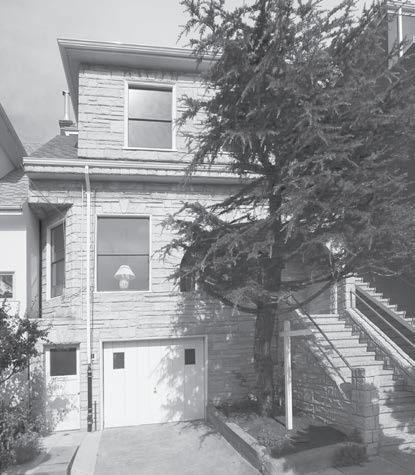

The San Francisco Giants began their 128th season in April, bringing crowds – and demand for nearby restaurants and bars – to their home at AT&T Park, which borders the Mission Bay and South Beach neighborhoods. “We survive through the Giants fans,” said Darren Fanelli, public relations director at O’Neill’s Irish Pub on Third Street.
Ike Sims, a manager at Burger Joint on King Street, said the Giants help his business as well, particularly fans looking to escape high food prices inside AT&T Park. “We’re definitely cheaper than inside the ballpark,” he said. Victoria Gordon, at Third Street Grill, said she stays open until 7:30 p.m. on game nights to accommodate the crowds, instead of closing at 5 p.m.
Several new Mission Bay businesses also depend on customers drawn to the area by the Giants. In the last two years Robert Nellet opened The Creamery, a cafe, and Iron Cactus, a Mexican restaurant, both on Fourth Street near Townsend. According to Nellet, customer traffic increases after games. “It’s definitely good for business,” he said, especially if the team is winning. “If they lose, [fans]


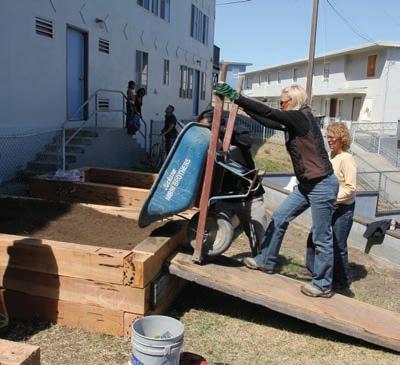
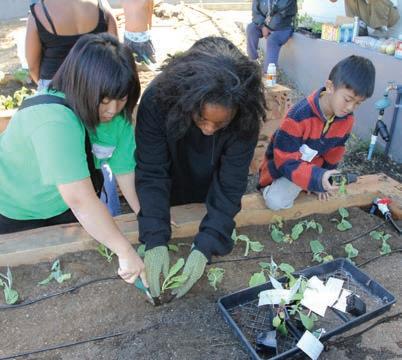
just go home to sulk.” Anna Weinberg, owner of Marlowe, a bistro at Townsend and Fourth streets that opened this year, said that although the restaurant isn’t a baseballdriven business, it gets a small rush before the games.

Two new restaurants that share the building with AT&T Park are doing well this year. The owners of ACME Chophouse, a steak restaurant, closed that eatery and opened Mijita, a Mexican restaurant, and Public House, a sports bar. “We’ve been very, very busy, especially on game days,” said Charlie Cross, a manager for both establishments.
While the Giants create winners out of some Mission Bay businesses, others are losers. Joe D’Urso, of D’Urso Italian Delicatessen on Townsend Street, said he sees a significant decline in business during afternoon games, when people who work for nearby multimedia companies tend to stay in their offices to avoid the crowds. “We’ve been struggling this season,” he said. Weinberg agreed that some customers avoid the area during games because of congestion. “Parking in the neighborhood gets a little checky,” he said.
Other businesses aren’t seeing
see giaNTS page 6




 By Zannah Noe
By Zannah Noe
A hundred years ago it was the hub of grit, with its narrow alleys and warehouses serving the shipyards and building trades. Today, if the South of Market(SOMA) neighborhood were a car, it would be a hybrid bio-diesel flatbed truck called the SOMA Prius Ram. The



cupies a tiny cluttered office amid yellowing papers, posters, hardware and knickknacks that a movie set designer couldn’t replicate. Rosellini makes custom tools when orders come in, but mostly the kilns are cool and the foundry is quiet unless there’s a film/photo shoot booked. If you get a chance stop by; the door is often open and the place is known for its annual Christmas party – held the first Friday of December – with blacksmithing demonstrations and beer.
In a back alley, across from the jailhouse on Bryant Street, is a modern day metal fabrication company, Reification. The business is housed in a shed built to accommodate the large crane rails that run the length of the machine shop. Reification was launched by Dave Holsonback in 1989. Holsonback’s right hand, Trisha Albert, has worked at the company since graduating from the California College of Arts in the 1990’s. On a recent visit Albert was creating a custom patina on an exhaust hood for a restaurant, and fabricating chairs. According to Holsonback, the company specializes in “house jewelry:” sconces, fireplaces, ornamental work and gates. They also create custom furniture, patinas, industrial and architectural elements. The business has been thriving by skipping from the dotcom bubble into the real estate boom that’s created a well-heeled loyal client base.
capable of large format printing on canvas or paper, high-end scanners, darkrooms for color, black and white, and mural work. There are three semesters of classes, from basic and historical to digital and alternative processes. Lectures and workshops, as well as one-on-one tutorials, are offered for a myriad of photographyrelated interests.
New restaurants have been slow to flourish in SOMA, which has been dominated by hamburger joints and Thai food. Town Hall changed all that when it opened in 2003, quickly spawning sister restaurants The Salthouse and Anchor+Hope. Town Hall offers a hearty lunch menu of BBQ sandwiches and blackened fish tacos. For dinner, any kitchen that produces a dish with lobster sabayon is out doing itself. Desserts like Butterscotch Chocolate Pot de Crème and Campfire S’mores Tart are a destination unto themselves.
giaNTS from page 5
much effect from the Giants. Lauren Hill, at District, a wine bar at Third and Townsend streets, said she doesn’t get a lot of business from baseball fans. “We do occasionally,” she said. “People tend to come to us knowing it’s going to be a little more sane” than bars closer to the ballpark.
John Chou, the son of the owner of Happy Donuts on Third Street, said he’s surprised they don’t sell more pastries to Giants fans. “It’s not as busy as it should be,” he said. According to Chou, business has generally been slow because of the economy. Chou gets roughly two unsolicited job applications a day because so many people are out of work.
former node of heavy industry has gone through numerous makeovers, retaining a few of its industries while absorbing new ones.
A business that still stands is a living museum of an earlier age: Edwin Klockars, Blacksmithing & Co., on First and Folsom streets. Started in 1912, it looks the same today as when Klockars was hammering out the hot metal. The open air shed is now run by Klockars’ 80-year-old son-in-law, Tony Rosellini. He oc-
Photography is flourishing in SOMA. A newcomer to the neighborhood, Rayko Photographic Lab, operates out of a repurposed automobile repair shop. It’s considered one of the largest photographic community centers west of the Mississippi. A strong staff, led by gallery curator Ann Jastrab, presents international and Bay Area photography shows in the front of the mammoth warehouse. In the back the facility houses a computer laboratory with printers
At first I was skeptical of American Grill Cheese Sandwich, which conjured an image of a gourmet food truck. But this brick and mortar establishment feeds your childhood memories. The buttered levain drips with sharp cheddar, havarti and Monterey jack, a stellar sandwich called Mousetrap. The Piglet comes with cheddar, cured ham with sweet apple mustard and rosemary butter. Complete your Americana experience with a cup of tomato soup while gazing at the paint-by-number paintings that takes you back to a kitchen in Ohio.
Businesses that do well during games have had to learn to adapt in the off-season Fanelli said. O’Neill’s uses its international beer selection and trivia nights to draw customers during the fall and winter. Sims said Burger Joint focuses more on the lunch crowd. “In this neighborhood, it’s all about the business lunch,” he said. D’Urso said customer traffic to his deli is more consistent when the Giants aren’t playing, and Chou said Happy Donuts is about the same. “It’s kinda dead,” he said.
According to Nellet it’s still too early to say how the off-season will affect The Creamery and Iron Cactus. “We’ll be sad to see the Giants season finish,” he said. The Giant’s play their last home game of the year on October 3.




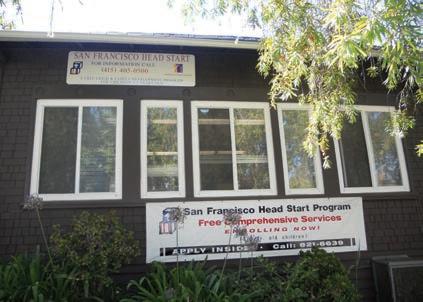 By Sasha Lekach
By Sasha Lekach
Sometimes reading isn’t as easy as A-B-C, especially for preschool age children who don’t have access to books and a structured educational environment. By the time they start kindergarten, students without preschool experience tend to fall behind, especially in reading skills. One Potrero Hill early literacy group, The Reading Tree, is working to close this learning gap.
Jude Deckenbach started Connecticut Street-based The Reading Tree in 2003. The nonprofit works with upwards of 20 preschoolers a year, teaching reading and making books a part of their families’ lives. The Reading Tree is supported by contributions from individuals and foundations, and collaborates with such partners as Jamestown Community Center, located in the Mission.
According to Deckenbach, when she suggests parents bring home books before a child can read and understand words and letters, adults often ask, “Why should I be reading to a baby?” She responds, “At birth, an infant has roughly 100 billion brain cells. During the first three years of life, their brain forms connections through their experiences. The unused synapses are pruned away forever. It is a case of use it or lose it. The exposure to the written word helps kids make these connections and be better prepared to succeed in school.”
Preschool and pre-literacy programs help children thrive. In the late-1990s, the David and Lucile Packard and John D. & Catherine T. MacArthur foundations reported that the average child in a middle class family is exposed to 1,000 to 1,700 hours of one-on-one reading time, compared to the only 25 hours the average child growing up in a low-income family receives. More recent findings have confirmed these results, connecting socioeconomic status with literacy rates. A University of Nevada, Reno study published this year found that the more books in a home the higher chance the children residing in it will complete more education levels.
The Reading Tree’s two programs, Prescription for Reading and Growing with Books, provide children’s books to the working class, predominately Latino communities located around Potrero Hill and the Mission. Books can have a longlasting impact on pre-literate children, according to former Reading
Tree participant, teacher and current board member Kim Garcia-Meza, especially for children who learn
reading and verbal skills. “History of storytelling is very strong in Latino culture, all cultures really. [There is] the idea of being very vocal and verbal, engaging. You can take it to the store, take it to the bus,” she said. “You don’t have to remember to bring a book, you always have your voice. Book time is important, but it is just one part.”
2 bedrooms, 2 baths
2 levels of living space
Remodeled kitchen & bath
Open living-dining-kitchen
Master bedroom suite w/private, green outlook
Views of Twin Peaks/SF Hills
Garage & extra storage
www.1085deharostreet.com
www.2009-17thStreet.com
English as a second language. As a bilingual, Spanish-speaking new mother, Garcia-Meza was grateful for the Reading Tree because she “got the opportunity to meet other moms who shared my culture and my language. [At the time] there were very few places, if any, that were run in Spanish; that was something that was really important for me. I wanted to make sure I was accessing literature, games, and activities.”
Garcia-Meza eventually became part of the Reading Tree team, teaching children and parents the joy of
Garcia-Meza now operates her own preschool program in the Mission. Her experience at The Reading Tree contributed to her curriculum’s focus on reading and books. Every year she sees students excel in reading and writing because of similar preschool programs that nurture literacy skills in a child’s native language. “There aren’t very many preschools that have a teaching language other than English,” she said.
“It’s really important if that happens in your first language. It’s important children hear a lot of their first language, whether it be English, Russian, or Korean.”
Seventy-three percent of Americans believe that children who enter kindergarten without prior educational experiences will catch up in elementary school, according to survey
see LiTeRacy page 25
Susan is both your Potrero Hill neighbor and Realtor®. With her keen business sense and warm approach to client service, she is at once upscale and down to Earth. Kind of like Potrero Hill.
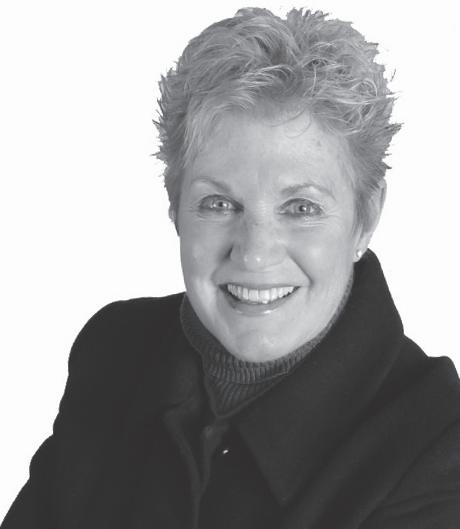
Signature North Slope
PanoView Home
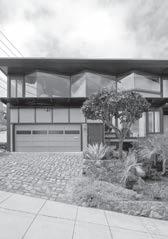
Sweeping panoramic view of downtown SF, bay, and bridge
3 bedrooms, 2 full baths
Expansive living room with wood burning fireplace
Exquisitely remodeled kitchen
2 level 1 bedroom, 1 bath apt.
2 car side by side parking
www.2000-20thStreet.com

2000 20th Street

Listed for: $1,695,000
And with nearly 30 years of San Francisco real estate expertise in the city’s most exclusive neighborhoods, and of course her own home base of Potrero Hill, it’s no wonder she’s the first person so many San Franciscans turn to for guidance when they decide to buy or sell property. She’s been at the top of this game for years; when only the best of both worlds will do, call Susan Olk.
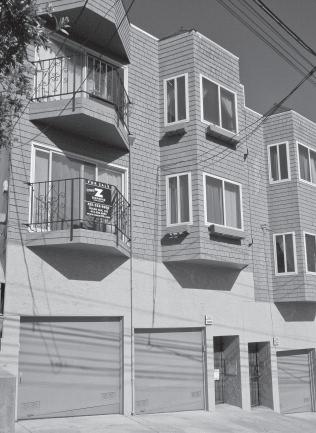
www.susanolk.com

Forty-year Potrero Hill resident Betty Packard has dedicated much of her life to fighting for what’s right. During high school Packard’s passion for writing took her – with the help of her English teacher – to The Indianapolis Star, where she developed a commitment to journalism and the public’s right to know. Packard worked as a writer, editor, and a publisher for various Indianapolis area organizations.
After discovering that her salary was significantly lower for the same jobs as her male counterparts, Packard became the first woman in Indiana to file a grievance under the Equal Pay for Equal Work, a federal law adopted in 1963. “I knew this wasn’t right and changes needed to be made,” said Packard, of her decision to file suit.
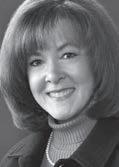
For the past thirteen years Packard has served on the City and County of San Francisco’s Ballot Simplification Committee. She’s one of the five volunteer members who help prepare an impartial summary of local ballot measures for the voter’s information guide. San Francisco is the only municipal jurisdiction that relies on a committee of unbiased, nonpolitical individuals to write the voter’s guide. The guide is completed in a span of two weeks, with public hearings held to enable citizens to critique the descriptions. Packard believes that“ev-

Beautifully remodeled home on the North slope! 2 bedrooms and 1 bath, open floor plan with gourmet kitchen; large attic space ready for EZ development!
eryone has the right to be heard” during these hearings. Once completed, the guide is mailed to every eligible San Franciscan voter. Packard lives with her husband, Steve Voris.
PTa from front page
also contributed to the funds fourth and fifth graders raised to attend an overnight trip to Coloma Valley as part of the school’s history curriculum. Included in the money raised last year was a $23,000 community challenge grant from the Mayor’s Office to pay for a mosaic mural on the school’s Missouri Street side. Artist Josef Norris and Kid Serve Youth Murals will assist students in constructing the mural between October 2010 and January 2011.
Webster’s PTA held a number of creative events to raise money, including running a pumpkin patch and selling decorate-your-own cupcakes at the Potrero Hill Festival, a drumming benefit at the Potrero Hill Neighborhood House, and an international festival raffle. The PTA also sold t-shirts and received scrips, or cash rebates, from The Good Life Grocery and other neighborhood shops and websites. “Every little bit helps,” said Fischer. According to Fischer the school was hit by budget
cuts “terribly, as with every other school in the district.” Last year the San Francisco Unified School District had to address a projected $113 million budget shortfall over two years. Daniel Webster polled teachers and parents prior to making recommendations about potential reductions, which led to a decision to cut-down on computer teachers in order to keep literacy specialists. “It was really a community decision,” said Fischer.
Webster’s PTA hasn’t yet launched its fundraising efforts for the upcoming school year. According to Fischer, the association has a small balance going into the fall semester, and will raise funds throughout the year. “As our PTA grows and we learn which fundraising endeavors are the most successful for our population, we can hopefully begin to save money and plan ahead for the succeeding year,” she said. Fischer said a first priority is covering supplies – such as pencils, paper, and crayons – that the school district isn’t providing. If there’s money leftover, Fischer hopes to support the drumming program and another overnight trip for older students. “We could use all the community support we can get,” she said.
According to Pierre Darolette, Starr King’s PTA president, fundraising for schools is “an unfortunate necessity,” during the recession. Darolette’s sons, Ethan and Hayden, are attending kindergarten and second grade this year. In his children’s school “families have been very generous,” he said. Star King’s PTA funds Stage Write, a popular
arts program that gives students the opportunity to write their own plays, some of which get produced by the school. “It’s a great program,” said Darolette, whose son participated last year.
The PTA also plans to invest in Starr King’s gardening program, which is incorporated into the school’s science curriculum. The school received a grant from the San Francisco Public Utilities Commission in 2009 to build a cistern to collect rainwater, which is used to water the gardens. According to Darolette, the PTA will help fund teachers to spend more time in the gardens.

The PTA also supports the school’s music program, and a variety of festivals and activities throughout the year, including the school’s Chinese New Year Parade contingent. Starr King’s PTA raised the bulk of its funds through its Spring fundraising campaign, which emphasized the urgency of supporting the school in the wake of budget cuts. “It was panic,” said Dale Scott, a PTA member. “We did much better than we expected.” While most of the funds came from direct contributions, some was collected through events throughout the year, such as a Spring Fling auction at the Potrero Neighborhood House, and a small fundraiser at Bottom of the Hill.
This year, Darolette said he hopes to build his organization’s capacity to write grants, in addition to regular fundraising activities. He said success depends on getting more parent volunteers. “We’re really trying to encourage parents to come out and work one weekend a month,” he said.
Unwarranted rooms down; great for bedroom and office, plus half bath. Gorgeous landscaped garden and deck. Half of a block to 20th Street shops and restaurants.
Call me for details!
 By Regina Anavy
By Regina Anavy
“My car window was smashed for the fifth time this year and probably ten times in the last three years,” said Brian Smith, who parks around 20th and Connecticut streets. According to Bayview Captain Greg Suhr, “The numbers for theft from vehicles are up from over a year ago. Some people think the economy is a contributing factor, but it’s more a case of opportunity. Criminals see something they want in a car and break the windows.”
According to residents at 20th and Mississippi streets, several burglaries occurred in July. In one incident, the burglars “climbed up the hill off 20th, entered through our backyard, and broke through the back door,” said Shellie Kitchen. As the family slept, the thieves took a computer, cameras and a wallet. No one was harmed.
On July 21st at 4:30 a.m., Officers Williams and Borghesani arrested an individual at 20th and Tennessee streets after a search of his backpack
Potrero Hill Crime StatiStiCS
July 16 through August 16
uncovered burglary tools and stolen articles, including cell phones, Ipods and GPS systems. The suspect was on parole for burglary and theft.
On August 4th a CompStat meeting, at which police captains are grilled about the crime statistics for their district, was held at the Bayview Opera House. It was the first time the gathering was held outside its usual venue, the Scottish Rite Masonic Center in the Richmond District. The SFPD initiated CompStat meetings a year ago. According to Police Chief George Gascón, future meetings will be held throughout the City to engender greater community involvement.
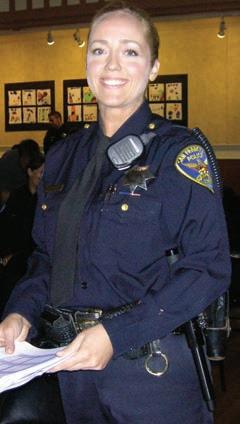
Suhr reported that it’s been a relatively quiet summer for shootings. There have been ten homicides this year in the Bayview, about even with last year, with the Potrero Terrace-Annex complex experiencing no violence this year. “The most dangerous criminals are either dead, in jail, or under gang injunction. We’re trying to continue with the proactive strategy of targeting individuals we know from talk on the street and getting them into custody to save them from themselves,” said Suhr. Gang injunctions are civil suits brought by the City Attorney against individuals known to be gang members to prevent them from entering “safe zones”
Assault: 22
Fight No Weapons: 50
Burglary: 13
Gunshots: 8
Robbery: 11
Theft: 31
Vandalism: 1
Other: 145
Source: Spot Crime, www.spotcrime.com and Crime Reports, www.crimereports.com
in their neighborhoods and to keep them under curfew at night.
Chris Kenney, Commodore of the Bay View Boat Club, reported that police caught two people attempting to remove a boat from Warm Water Cove. The suspects claimed that the boat was drifting, and they had a right to salvage it under nautical law. A search of the vessel uncovered that it was registered to Van Walzberg. The police brought the boat to the public launching ramp adjacent to the Bay View Boat Club, where it was identified. Former Bay View Boat Club Commodore John Super sees these incidents as “an undercurrent of the homeless problem.” Super said that of three boats stolen this summer, two were recovered and the third was found in Islais Creek. “There’s a whole contingent of boating homeless hanging out there,” he said. Bridgett Carol, Port Captain of the Mariposa-Hunters Point Yacht Club, said she’s not sure all of the boat thefts were even reported to the police. Nevertheless, “This was a wake-up call for all of us. We made sure the rest of our stuff was locked up, and we put security cameras in front and back.”
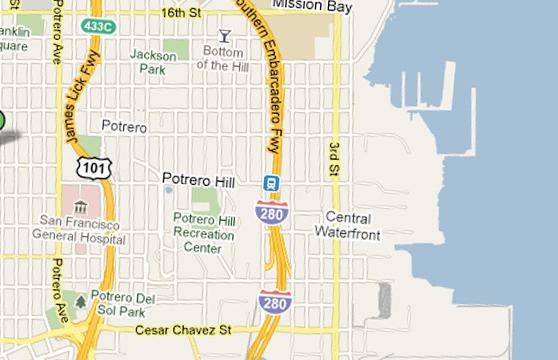
Around midnight on August 4th, in Mariner’s Village, a housing complex in Hunters Point, an Internal Revenue Service (IRS) criminal investigation agent was approached by three subjects as she stepped out of her car. One suspect pointed a gun at her and demanded money. The agent identified herself, drew her firearm, and fired, wounding two of her assailants. All three suspects were eventually apprehended. The IRS agent has been re-assigned. Two of the suspects remain in the hospital, and will be arraigned in court when they’re released.
Pastor Shad Riddick of Bayviewbased Metropolitan Missionary Baptist Church knows one of the wounded suspects, who is 14-years old. According Riddick, “He’s a smart kid, who made A’s and B’s at
school and used to come to church.” Riddick believes that the crime was prompted by ongoing changes in the neighborhood. “Whenever a community is going through a transition, these sorts of things happen. The boys hanging on the street make people of other races afraid to move in. The percentage of AfricanAmericans has gone down. People are moving over to Antioch, Vallejo and other places in the East Bay. I don’t know what the solution is, but we’re going to have to corral these people and let them know they can survive redevelopment,” said Riddick. update
On June 4th, four bicyclists were struck by a driver, who ultimately crashed his sports utility vehicle at 17th and Missouri streets. David Clark was arrested and charged with eleven felony counts. A preliminary hearing date will be set on September 24th, and evidence will be presented to determine whether a trial is required. The original prosecutor, Elliott Beckleman, has left the District Attorney’s office, and Todd Barrett is now handling the case.
Rec PaRk from front page
Native American dreamcatchers, and adult exercise. No programs tailored to neighborhood kids, teens or seniors were evident. Eagleton believes that lay-offs or transfers of crucial personnel and program cuts have led to spikes in youth crime, decreasing park use and an overall decline in quality of life.
Under the department’s new administrative structure, RPD facilities
work with everybody,” said Eagleton. One of the employees was transferred to another recreation center in District 6, but has since left; another retired but still volunteers at the Rec Center, where he once gathered neighborhood kids to play baseball; and the former director for Sunday programs now oversees summer sports programs at Kezar Stadium. None of the former employees wanted their names published in this article.
Last year, Eagleton was among a group of Bayview and Potrero
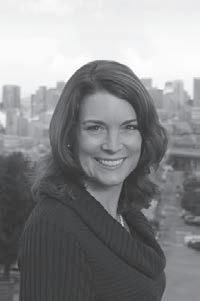
director agreed. While the center’s posted hours indicate that it’s open on Sundays, the facility is generally closed, with the bathrooms locked. “We had so many programs that the kids loved, that were right for the community, the after-school activities, the hip-hop social club, the flower garden that was created with the help of neighbor Jeanne McKenna and another director; baseball, basketball, cooking classes...the kids loved it so much, it was hard to get them to leave!” said the ex-rec director with sadness in his voice.
maintenance manager Steve Cismowski no longer helms programs for the neighborhood. According to Cismowski, a new manager, Bob Palacio, is responsible for recreation programming. Eagleton is concerned that Palacio is “a mayoral appointee, not a park guy and who doesn’t know the neighborhood.” Meredith Thomas, executive director of nonprofit Neighborhood Parks Council, spoke in favor of Palacio, emphasizing “he is second-generation RPD, has spent years in the department, and had oversight for Mission/Bernal Heights parks for the last several years. His background is in recreation, which is why he has been placed in charge of it.” Cismowski believes “the changes are good for our department, and give us greater efficiency in delivering programs.”
According to Eagleton, three longtime and beloved Rec Center staff were removed in the past year. “These were people who grew up in the projects, who knew the neighborhood, who ran programs for the kids from the projects, who knew how to
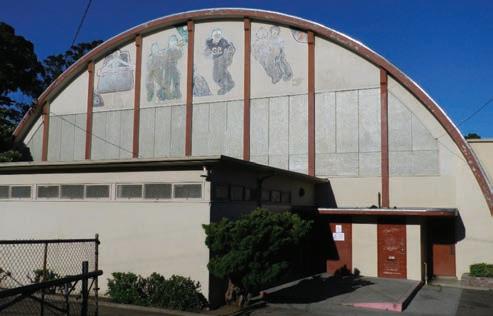

Hill residents who petitioned the department to keep the Rec Center’s employees, pointing to their solid, working relationships with parents and kids, an effort that failed. With the employees and the programs they ran gone, local youth, particularly from the Potrero Annex-Terrace complexes, have less access to recreational activities. “Every week now ...they’re throwing rocks, breaking windows, getting into trouble,” said Eagleton. RPD replaced the departed employees with a new director, Mike Bross.
Another longtime Rec Center user who wished to remain anonymous echoed Eagleton’s sentiments.
“The new programs have brought a whole different crowd to the park. Where you used to see many youngsters and teens from the housing development involved and engaged at the Rec Center, now there are kids who are basically being dropped off by their nannies.”
“The Rec Center is deserted now, especially on Sundays,” Eagleton and the park’s former Sunday recreation
Eagleton pointed to another example of RPD actions at the Rec Center that raised the ire of both park regulars, dog walkers and members of the Golden Gate Audubon Society for inadvertent habitat destruction. “A few months ago, they cut a lot of the branches from the cypress trees. They said it was to protect children, but it was really about a homeless person. A group of birdwatchers sent a letter to RPD, specifically asking them not to do it because birds were nesting in those trees.” The department chopped away at the trees anyway, ignoring their pleas. “There’s a whole wildlife community at the park that people aren’t aware of...a family of hawks, warblers, orioles. It was so sad to see the adult birds looking through the fallen branches after they cut them down.” Eagleton herself once rescued a rare, lilaccrested Amazon green parrot that had been attacked by a hawk from the same trees.
According to Thomas, NPC is-

sues an annual report card rating the City parks and playgrounds, and noted that they have been keeping an eye on the Rec Center because it is a “failing playground” and didn’t score all that well this year, barely earning a passing grade. “While the site needs structural improvements, the site can pass if it is kept clean.” Some issues which RPD hasn’t addressed include restrooms, the gym building and the play field. “The clubhouse has structural challenges. The restrooms are inside the clubhouse and need park staff to open them,” said Thomas. “One big problem is sight lines. Parents with more than one child can’t watch other children while using the restroom. When the building is locked, the restrooms are locked, diapers get left in the play area, kids use the bushes. There is a desire to fix the problem, but the building, which is historic, will require significant investment to upgrade it. One solution that’s been suggested would be a freestanding outdoor bathroom facility.”
RPD’s Cismowski agreed. “Given that it was built about 60 years ago and hasn’t been touched since, renovation is long overdue. Costs to renovate it will be especially dear. I hope someday we’ll be able to upgrade the clubhouse.”
Thirteen-year Wisconsin Street resident Terrence Jones coaches soccer for one of nine Starr King Elementary School teams, which practice at the Rec Center’s fields. Last month Jones helped recruit dozens of parents, dog-walkers and other supporters to Rebuild Potrero’s Commu-
nity Cleanup Day at the park. “We have a fantastic grass field that we practice on up at the Rec Center, but it is in terrible condition due to neglect, funding cuts by Parks and Rec, and budget cuts at the City. The grass does not get mowed regularly, the gophers make holes, and the sprinklers do not work. No child’s broken an ankle yet, but it’s just a matter of time,” said Jones. “We’re able to get such strong participation at Starr King due to the field’s proximity to the school and its after-school program, plus the Latchkey after-school program at Jackson Park.”
Thomas pointed out that the facility is out of compliance with the Americans with Disability Act (ADA). RPD plans to address ADA and other requirements as part of a capital improvement effort that’s been in the planning stage for

more than two years. “Immediate impacts [of the capital improvement project] are that neighbors won’t have access to the Rec Center and its restrooms on closed days,” said Cismowski, “and that, no doubt, will affect the broader community beyond just the issue of access.”
The $1 million-plus bond-financed project will focus on external work only – landscaping, pathways and access to the rear play area –with no improvements made to the Rec Center building or the field. The work will take eight to nine months and “due to a lengthy bidding process, we’ll be lucky if it starts in November or December this year,” said Cismowski. During construction, programs currently being offered at the Rec Center will be relocated to Jackson Park.
Eagleton believes that the monies spent to bring the Rec Center into ADA compliance might be better used to fund programs that meet the community’s diverse needs. She noted that the center, which includes a vintage wood floor gymnasium, is already wheelchair accessible, and no stairs need to be climbed to access the building.
“It looks like they’re going to spend a huge amount of money to expand the cement area around the entrance that could go for more green space, or fixing the structure.”


In contrast to the Rec Center’s “C” grade, Thomas noted that Jackson Park rated a grade greater than “A” this year, despite the fact that its historic clubhouse – built in the early 1930s and renovated in 1999 – has been closed for a year due to structural problems. “The building is old and the floors have settled unevenly, raising health and safety concerns. The department had a structural engineer evaluate it, who found that it did have problems and programming was ceased for obvious deficiencies,” said Cismowski. “We have a job order to shore up the structure to make it safe for occupancy.” RPD is fixing the clubhouse, which Cisnowski projects will re-open by October.
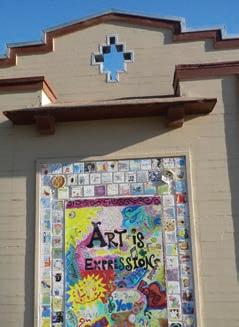


On Yelp and SFKids.org, Jackson Park gets high marks. According to Kelly R on SFKids. org: “My toddler loves it here! There’s a great play structure for her to conquer and this playground is relatively clean (yay!) The young child (2-5y) section is separated from the older kid section by a low wall – which is nice, since my 2.5 yo is interested in older kids and loves to watch what they’re doing...as was the case last weekend. It makes for the perfect place to stop before or after our trip to Whole Foods.”
Amy K commented: “I live right by two terrific playgrounds...Plus, how great is Pot Hill? There’s a diner 2 blocks away (Sally’s), you can smell the hops from the Anchor Steam Brewery, and the other moms and nannies are particularly friendly and nice in this spot. Full of win.” And, according to Nick R, “Another poster commented on the field being in poor shape; believe it or not at one time it may have had the best field in the city, the grass was always in great shape. Park and Rec used to hold its youth
baseball league’s All-Star games at Jackson, both diamonds would have game...Gary, the director, would have barbecues going and it was great. We used to have flag football leagues and everything there. Now it’s pretty much a haven for yuppie moms and babysitters to bring their kids, which is fine, just different. Plus the gym is closed now. What a great little halfcourt gym, that’s where I honed my hoops skills.”
As with the Rec Center, Jackson’s playing field has its issues. A popular rental site for numerous softball and soccer leagues, the field has poor emergency access, there’s no attendant, the sole gate to the field is locked, and the maintenance is intermittent. With the clubhouse closed for the past year, there’s been no access to ice, emergency and first aid supplies, in case of injury, which the softball teams have complained about. A longtime Pennsylvania Street resident and Rec Center regular who didn’t want to be named circulated a petition last month calling for the return of Rec Center programs that have been cut. Sixty signatures were collected and sent to the mayor, the local police captain, the View and RPD last month. The petition expressed concern that the programs for at-risk youth had been eliminated, and replaced by “day care for the wealthy, programs you have to pay for,” and asked that the Rec Center be restored to full staffing levels. Like other community members, the resident feels that the elimination of the former employees was just “wrong. RPD got rid of about 100 years of experience and didn’t consult with anyone. People don’t want to acknowledge this, but there are two sides to the Hill. In this economy, every family could use some help, especially those less fortunate.”
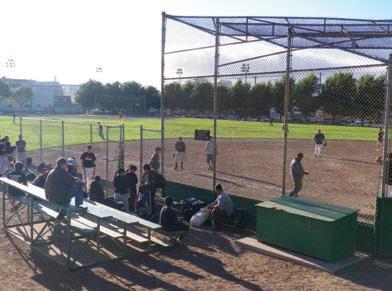



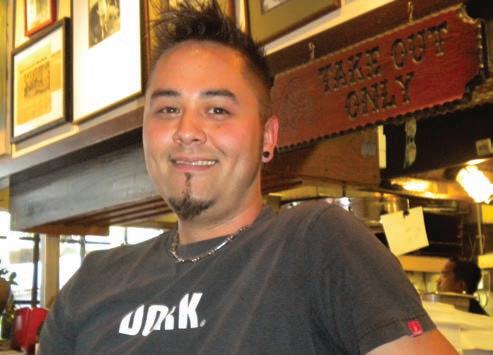
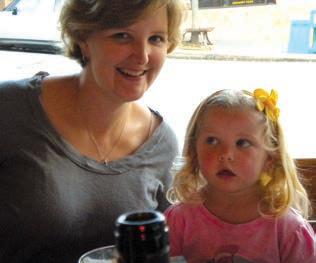
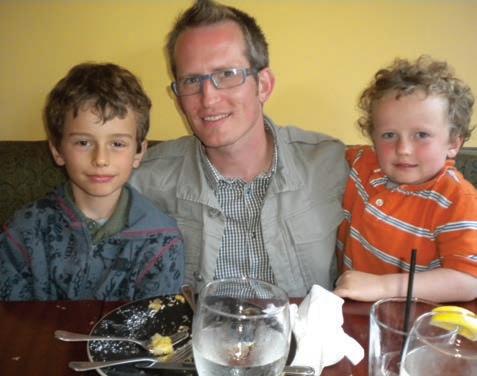


just go along for the ride. There are nuts involved, but they’re more of a distraction than an enhancement.


Next door to Farley’s is Hazel’s Kitchen, which distributes Zoe’s Cookies, out of Richmond. I look them over; two ounce bundles tightly bound in plastic and sold for $1.75. If Zoe’s cookies are half as tasty as the folks at Hazel’s are friendly and accommodating, I might be on the verge of discovering my true love: the baked variety. I pick one out of a crowd, extracting just the cookie I want from the basket near the register. Unwrap and take a bite.
The thing about Zoe’s Cookies is that they’re made from all natural ingredients. No artificial stuff. Just pure cookie ingredients, making them healthy to consume. Perhaps the healthiest cookies I sampled. Unfortunately, they taste like it.
I don’t know if it’s the fact that they rely on wheat flour instead of the disgraceful white kind. Maybe what I miss is whatever result you get when you throw stuff like emulsifiers and monosodium glutamate into a bowl. Maybe I just don’t appreciate the subtleties of a chocolate chip cookie made the way nature would do it. I sought a second opinion from Ken French, a premier cookie gourmand, and the best keyboard player in San Francisco. French has been tasting local cookies since he settled in the neighborhood seven years ago with wife, world-class jazz vocalist, Clairdee.
French agrees with my reaction to Zoe’s. “A good cookie must strive for certain immutable standards,” he said. “I mean to adopt an open-minded, new-age California attitude – when tasting a cookie whose priority is delivering blood vessel-friendly ingredients rather than killer flavor – but from the first bite I am reminded that in some realms absolutes do exist, and old world standards must reign.”
Since the paring of cookie and
coffee is akin to a law of nature, I made my way to another great local café: Chatz Roasting Company on 18th Street. The bakery selection is impressive, but with an emphasis on brioches, croissants and tarts. Owner Masoud Mostofi had to search under the counter to find a chocolate chip cookie; the only one left in a box delivered from supplier Raison D’etre, a South San Francisco bakery with an impressive list of clients among the City’s restaurants and cafes.
Looks dry, maybe stale. And at $2.50 for an ounce and a half offering, it’s not the best cookie bargain on the Hill. No matter, when searching for the perfect cookie, price is no object. I do like that it employs chunks, rather than chips. And even though it has passed its prime, the ingredients blend together like the horns, strings and percussion sections of the San Francisco Symphony with Michael Tilson Thomas on the podium.
introduces itself to my taste buds. And it’s gladly welcomed.
A little further up the Hill, on 20th Street, I check-out the selection at The Good Life Grocery. My favorite of the store’s offerings isn’t actually chocolate chip but a peanut butter cookie dipped in dark chocolate, sold for $1.79. There are various concoctions that marry these two flavors, Reese’s Peanut Butter Cups being the best known. But they usually don’t get it quite right. San Rafael’s SweetMill Bakery delivers the goods to The Good Life daily. Their chocolate/peanut butter mix is what it’s all about, heads and shoulders above their basic chocolate chipper.
Were my criteria broader, open to any combination of cookie and chocolate, SweetMill’s dipped variety would be a contender. I’m a purist, though; I adhere to the rules laid down when I embarked on this odyssey. But, just to be sure, I devour one more of SweetMill’s peanut butter

a big door that may have had its basic training at Fort Knox.
One of the things I like about the Ultimate Cookie is that its texture veers toward the crisp rather than the chewy. I like ‘em crunchy. This 2.5-ounce, $2 treat presents an enjoyable blend of flavors with no single ingredient commanding attention. Clearly a first string player on the cookies team. And satisfying in a way that once the morsels have been rolled around on the tongue and swallowed, I can happily go on to something else. And that might be what keeps this candidate from being top of its class. After all, what I’m looking for is the cookie that does not satisfy me, but, once it’s devoured, leaves me hungry for more of the same.
Outside of Thinker’s I gaze down into the bay, watch a sailboat sliding lazily over the hard-looking surface of the blue water. And realize there’s an important world down the hill. Dogpatch! With more cookie places to investigate.
I want to find a place that makes its own chocolate chip cookies. I visited Baked, and asked owners Tina Fisher and Andrea Ortega what it takes to make the perfect chocolate chip cookie. They responded with knowing grins. Like true artists they explained that there’s no standard product when it comes to getting a chocolate chip cookie out of their oven. The one currently on offer, for $2, features three kinds of chocolate: milk, semi-sweet and mocha chips. Their source is the Guittard Company in Burlingame, known for its superb products. At an impressive four ounces, it’s almost a little cake, delivering texture and flavor that reminded me why I enjoy this dessert in the first place. While no flavor is dominant, the sweetness immediately
and chocolate classics before I walk across the street and down the block to Thinker’s Café.
I find this a fun kind of place where I encounter the spectrum of San Francisco characters, including a bald physicist in conversation with a green haired skateboarder; the professor offering insight, the youngster contributing balance. And you can find chocolate chip cookies there. Not just regular stuff, but the product of Ultimate Cookie, which last I checked, manufactures only two models at its Folsom Street bakery. You can purchase the chocolate chip cookies or the macaroons directly from Ultimate Cookie, but it’s not easy. First you have to get the attention of the manager or the bakers hard at work, protecting their secret recipes behind
I know how to make chocolate chip cookies, incidentally. And it ought to be easy to put out a batch we could serve at a birthday party for angels. You simply mix up some flour with a bit of baking soda, maybe some salt and sugar, throw in an egg or two and a flavoring like vanilla. Butter belongs in this concoction also. Finally come the chocolate chips. Now take portions of the mixture, maybe a couple of tablespoons-full at a time, and put them on a cookie sheet and into the oven at about 350 degrees for ten minutes or so. And there you have it: the perfect chocolate chip cookies. I wish! The fact is, building the perfect chocolate chip cookie is more a matter of art than science. It’s the pursuit of that art, and some great flavorful experience, that has me scouring the Hill for the best of the best. But for this investigation to be complete, I can’t neglect the cookie purveyors along and adjacent to Third Street. There’s more work to do. More cookies to eat.
“A good cookie must strive for certain immutable standards. I mean to adopt an open-minded, new-age California attitude ....... but from the first bite I am reminded that in some realms absolutes do exist, and old world standards must reign.” - Ken French
300 7th Street,




The San Francisco General Hospital Rebuild Community Mural Paint-In will be a funfilled day of mural painting for neighborhood children and families. Spanning two blocks along Potrero Avenue from 22nd to 23rd Streets, the mural will beautify the SFGH Rebuild construction wall with original artwork from Buena Vista Elementary School students, hospital patients and staff and other community members. Mural direction provided by Mission-based Precita Eyes Mural Arts Association.
El día de pintura del mural comunitario de la reconstrucción del Hospital General de San Francisco (SFGH, por sus siglas en inglés) será una jornada plena de diversión creativa para todos los niños y familias del vecindario. El mural ocupará dos cuadras a lo largo de la avenida Potrero, desde la calle 22 hasta la 23, y embellecerá la pared de reconstrucción del SFGH con las creaciones artísticas originales de los estudiantes de la Escuela Primaria Buena Vista, los pacientes del hospital y otros miembros de la comunidad. La Asociación de Arte de Precita Eyes, basada en la Misión, dirigirá el proyecto del mural.

FREE and open to the community, ages 7 and up welcome—children must be supervised by an adult.

ACTIVIDAD GRATUITA y abierta a la comunidad, para personas de 7 años en adelante. Los niños deben ser supervisados por un adulto.

Bye bye Leah...we’ll miss you so much, especially in the mornings! WEAH! Love, Jessica and Bella.
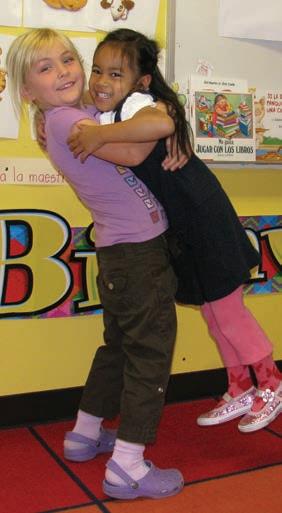


The View is delighted to publish local kids’ birthdays, accomplishments, and milestones. Please email your image and/or caption to graphics@ potreroview.net by the 18th of the prior month. High resolution photos, please!

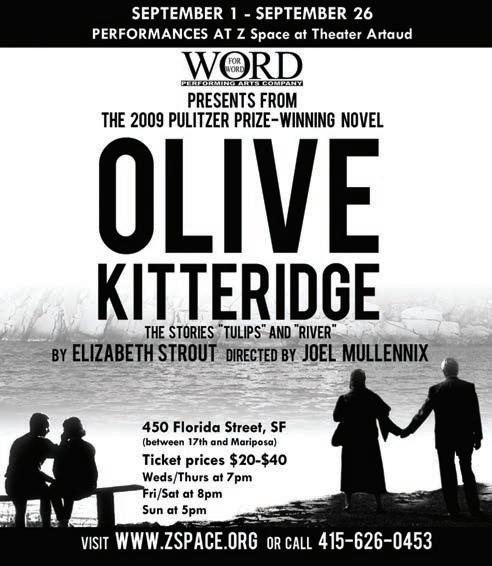


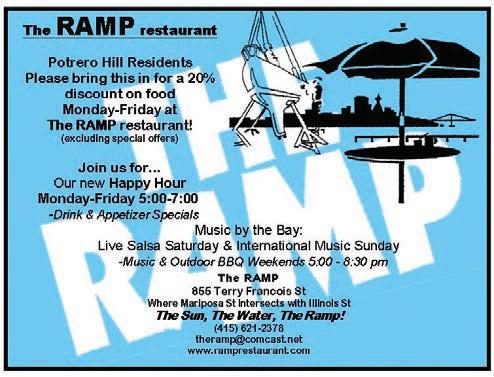
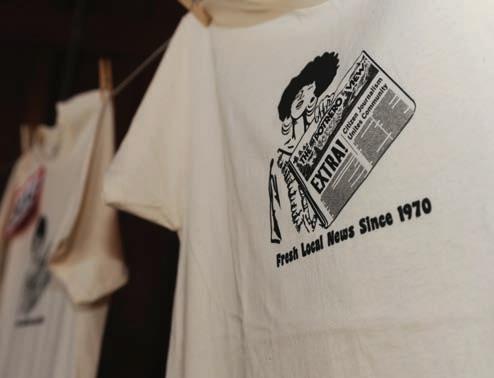
Through September 17
Art: Me and My iPhone Gallery 323 presents Potrero Hill artist and filmmaker Lise Swenson’s collection of photographs and text images, which reflect Swenson’s year long pondering on what it means to be fifty. Film retrospective September 10th from 8 to 10 p.m. Gallery open Wednesdays through Fridays 3 to 7 p.m., or by appointment. 323 Potrero Avenue. Information: 626.4333; 323gallery@att.net.
September 2
Music: The Seedy Naturalists and Swindlefish
Farley’s presents Abel Mouton and Michael Mulled from the Seedy Naturalists, debuting new material sure to delight. Swindlefish will follow with gypsy jazz folk-rock fusion beats, with original music from ace violinist Ben Barnes and re-arranged covers of dearly loved material by various artists, including Led Zeppelin, David Bowie, and Charlie Daniels. 8 p.m. Free. 1315 18th Street.
September 2 through 5
Film: Bernal Heights
Outdoor Cinema
BHOC’s seventh annual season offers free screenings of Bernal Heights and other local filmmakers’ works in neighborhood parks and open spaces. The festival includes a Film Crawl on September 3rd during which five venues on Cortland Avenue will screen films simultaneously. Beginning at Inclusions Gallery at 671 Cortland Avenue with a meet-the-filmmaker hour, followed by the screenings at 7:30 p.m.; second screening at 8:30 p.m. Free. Information: www.bhoutdoorcine.org.
September 3
Music: Jazz Night Friday
Jack’s Club offers Jazz Night Friday with Vaugh Johnson and other modern jazz ensembles every Friday night. Head to to this eighty-year-old eatery for smooth sounds and Tasty’s Cajun Creole Kitchen. 7 p.m. 2545 24th Street. Information: www.jacksclubsf.com.
September 9
Community: Art Auction ‘10
Against the proposed “sit/lie” initiative on the ballot this November?
Attend “Transforming Art into Action: Standing Up for Human Rights,” a live and silent auction to benefit the Coalition on Homelessness. 5:30 to 10 p.m., $25 per person. SOMArts Cultural Center, 934 Brannan Street. Information: www. cohartauction.tumblr.com; 346.3740, extension 307.
September 10 to 12
Art: The Ceramics

The first Ceramics Annual of America exhibition and fair will showcase the quality and diversity of contemporary ceramics in America, providing a venue for regional and national artists working in the clay medium.
Information: http://diecigiorni.gipibird.net.
September 12
Community: Grandparent’s Day
Farley’s inaugural observance of Grandparents Day! Bring grandma and grandpa for a free coffee drink of their choice. 1315 18th Street.
September 14
Music: JimBo Trout
JimBo Trout returns to Farley’s. The soloist performs on guitar, banjo, and harmonica from a huge catalog of songs and styles, including bluegrass, ragtime, blues, cowboy music, swing, honky-tonk, Appalachian, rock and roll, and more. 8 p.m. Free. Farley’s, 1315 18th Street. Information: www.jimbotrout.com.
September 17 & 18
Art: SF Dump Artists in Residence Exhibition
The event will include panel discussions, lectures, tours and demonstrations. Opening reception September 9th from 5:30 to 9 p.m.; Friday and Saturday from 10 a.m. to 8 p.m.; Sunday from 10 a.m. to 6 p.m. Admission: $10 one-day pass; $20 two-day pass; $45 opening reception; $5 after 5 p.m. on Friday and Saturday; free for kids under 18 Information: http://ceramicsannual.org.
Music: Power to the Peaceful Festival Musician and human rights activist, Michael Franti, hosts the 12th Annual Power to the Peaceful Festival, one of the nation’s largest free annual music festivals with more than 50,000 attendees, featuring a variety of international musicians, visual artists and more than 200 exhibitors and green vendors. The festival combines music, the arts, action and yoga to educate attendees on issues of social justice, non-violence, cultural coexistence and environmental sustainability. Show times vary. Free. Speedway Meadow, Golden Gate Park. Information: www.powertothepeaceful.org.
September 10 to 12 and 17 to 19
Theater: Dieci Giorni- 10 Days

Directed by Jim Cave, Dieci Giorni – 10 days is a new collaborative opera inspired by Boccaccio’s Decameron, written in 1353 and set within lush gardens where ten young men and women escape the advance of a plague in Florence. Through the darkest days of Renaissance life, Boccaccio’s stories tell of survival, triumph over adversity, destruction and retribution, and the glory of love. 8 p.m. Thick House, 1695 18th Street.
Recology San Francisco hosts a two-day reception for its artists in residence, Val Britton and Zachary Royer Scholz. The culmination of four months of work, the artists have scavenged the dump to make art and promote recycling and reuse. Friday, 5 to 9 p.m. and Saturday 1 to 5 p.m. 401 Tunnel Avenue. Information: 330.1415.
September 19
Art: Roadworks 2010
The San Francisco Center for the Books will host its seventh annual Roadworks street fair and benefit. The day-long art festival showcases printmaking using a threeton construction steamroller to create large-scale linoleum block prints. The event includes a bazaar of fine and affordable wares from local artists and vendors, as well as tables represented by different local organizations. 12 to 5 p.m. Rhode Island Street between 16th and 17th Streets. Information: www. sfcb.org.
September 21
Benefit: OWL Fundraiser
Join Farley’s second annual Older Writers Laboratory (OWL) Poets’ fundraiser, With Sickness and With Health, to benefit Circulo de Vida (Circle of Life), a cancer support organization for Spanish-speaking San Franciscans. Circulo offers psychosocial support groups for Spanish-speaking women and men with cancer, as well as programs for children and Las Angelitas, trained peer counselors who visit patients. Open mic to follow; share a poem, story, song or music. 7 p.m. 1315 18th Street. Information: Susan Ford, 407.4297; suford@earthlink.net.
September 22
Community: District 10
Candidate’s Forum
Want to hear more from the candidates running in the upcoming District 10 Supervisor election? University of California, San Francisco is sponsoring a candidate’s forum; all eligible candidates will be invited to participate. 6 p.m. Genentech Hall at UCSF’s Mission Bay campus, 1675 Owens Street.
September 23 through
October 23
Art: Urban Patterns
Gallery 323 presents Leo Germano’s exhibition Urban Patterns. Opening reception September 23rd, 6 to 9 p.m. Gallery open Wednesdays through Fridays 3 to 7 p.m., or by appointment. 323 Potrero Avenue. Information: 626.4333; 323gallery@att.net.

September 24
Benefit: Art for AIDS
The 2010 Art for AIDS charity auction features paintings, sculpture, photography, jewelry and foods from Bay Area restaurants, caterers, wineries and breweries. With a performance by Dreamgirls and more than 160 works of art, the silent auction includes a variety of items and events you may not be able to live without. 5:30 to 9 p.m. Live auction starts promptly at 6:45 p.m. Tickets: $100; $200 for VIP. The Galleria at the San Francisco Design Center, 101 Henry Adams Street. Information: www. artforaids.org.
September 25
Benefit: Viva Muralismo
SOMArts and the Precita Eyes Muralists Association hosts a silent auction for original artwork by muralists, featuring iconic mural art and other original works created by local muralists. Enjoy live music, observe a live participatory mural painting performance, experience tasty hors d’oeuvres and a no host bar. 7 to 10 p.m. Tickets: $30 advanced general admission; $35 at the door; $50 VIP admission. SOMArts Bay Gallery, 934 Brannan Street. Information: http://www.precitaeyes.org; 285.2287.

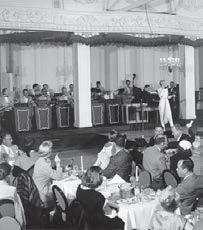 By Jim Van Buskirk
By Jim Van Buskirk
You don’t have to go to the east bay to find a robust flea market. There’s now a market on the third Sunday of each month – or fourth if there’s a 49ers game – from 6 a.m. to 3 p.m. in the huge Candlestick Park parking lot. Roughly 150 vendors displayed their wares at the first market in July. According to the market’s website, www. candlestickantiques.com, that number may grow to 500 before long. Everything on sale is at least 20 years old, including French antiques, garden ornaments, toys, jewelry, collectibles and old stuff of every description and price. Food vendors help make a day of it. If you go wear layers; Candlestick can get very windy. Upcoming markets will be on September 26, October 24, November 28 and December 19. Directions and vendor information are posted on the website. Admission is $15 from 6 a.m. to 8 a.m., $5 thereafter. Photograph by Peter Linenthal.
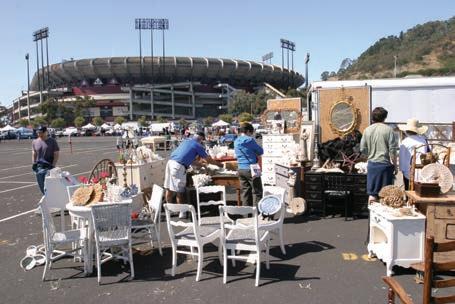

The Venetian Room, in San Francisco’s Fairmont Hotel, reigned supreme as America’s premier supper club from 1947 to 1989. It was there that Tony Bennett introduced his signature song, “I Left My Heart in San Francisco,” and show business legends like Ella Fitzgerald, Marlene Dietrich, Joel Grey, Bobby Short, Bernadette Peters, James Brown, Carol Channing, Nat ‘King’ Cole, Judy Collins, emerging comedian Ellen DeGeneres, and other performers held forth for more than four decades. Everyone – audiences and performers alike –agreed that the Venetian Room was the place for an elegant evening of entertainment.
Marilyn Levinson, founder of Bay Area Cabaret – dedicated to bringing extraordinary solo performances, expanding the definition of cabaret and broadening its audience – is thrilled to be returning the venerable nightspot to the City’s rich cultural scene. “The Venetian Season” launches on October 17th with Marvin and More , starring
Marvin Hamlisch, with special guests London’s West End star Maria Friedman and Broadway tenor J. Mark McVey. The evening will feature highlights from the Grammy-, Emmy-, Tony-, and Pulitzer Prizewinning composer’s vast repertoire, which includes A Chorus Line, The Way We Were, and They’re Playing our Song. It will mark the West Coast debut of Friedman, a threetime Olivier Award winner and National Theatre star, who will perform her signature interpretations of Stephen Sondheim and popular songs from her recent CD, The Great British Songbook Construction on the Fairmont Hotel atop Nob Hill began in 1902. But before it opened it was heavily damaged in the 1906 earthquake and fire. Renowned architect Julia Morgan rebuilt the hotel, which reopened on April 18, 1907. San Francisco’s premiere hotel for the first half of the 20th century, by the early-1940s the once-grand establishment entered a period of benign neglect, catering to a clientele of mostly permanent, elderly residents.
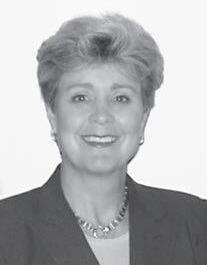
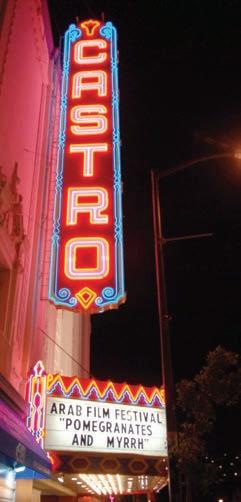 By Linda Chang
By Linda Chang
On a sunny afternoon at San Francisco’s Crossroads Café courtyard, Shehadeh discussed the arcs and archetypes of different storytelling cultures: will western popular culture ever be able to understand the deep literary traditions of the Arab world and, in particular, appreciate its emphasis on lyrical poetry? Or will Arab identity remain trapped by politics and stereotypes?
At 14 years old, AFF is the oldest and largest Arab film festival in the country. But while Asians and Asian-Americans have made steady progress in shedding the limiting shackles of orientalism through their own rising economies and dynamic cultural production, Arabs have stubbornly remained subjects of the western imagination. Arab culture, despite its profoundly vibrant and deep roots, has little foothold in the west beyond set characters: an infidel who doesn’t realize the Crusades are over, the keffiyeh-wearing terrorist, or the freedom-hating subversives.
determined women, has steadily worked to dispel Arab stereotypes. The festival now sustains three yearround offices, in San Francisco, San Jose, and Los Angeles. Film festivals featuring works by and about Arabs and Arab-Americans have sprouted up across the country. Mizna, in the Twin Cities, Minnesota, runs an award-winning literary and art journal, and hosts their own film festival. Boston features a robust annual Palestinian Film Festival. AFF has grown to collaborate domestically and internationally, advising the new Abu-Dhabi Film Commission and the Cairo and Syrian Film Festivals. The organization plans to develop a traveling show to accommodate smaller communities across America. AFF also supports ongoing high school and university programs, providing films and guest speakers to classrooms throughout California.
Outside Lands, the music and arts festival now in its third year, delighted crowds last month with an array of performers. The event, held annually at Golden Gate Park, drew upwards of 60,000 attendees on each of its two days, with headliners Kings of Leon, The Strokes, Phoenix, Further, Social Distortion, Al Green, and My Morning Jacket as well as crowd favorites Nas & Damian Marley, Wolfmother, and Gogol Bordello.
Michel Shehadeh, the Arab Film Festival’s (AFF) executive director, is a man on a quest. He yearns for the day when he’ll be able to produce his screenplay about an Arab poetwarrior into a feature-length film.
There are exceptions. Aladdin is a Disney classic, Mary Zimmerman’s Arabian Nights engaged audiences nationwide to critical acclaim and standing ovations, and Jonathan Curiel’s 2008 publication of Al’America: Travels through America’s Arab and Islamic Roots, showed that the west does, in fact, intimately know Arab culture—proving it as American as apple pie.
AFF, founded in 1997 by three
Marin Preparatory School is an independent, non-profit, coeducational school, offering classes from Junior Kindergarten through 8th Grade. Our Mission is to provide opportunities for students to achieve their personal best, become positive, responsible community members, and to embrace learning in a warm and productive environment.
• Innovative, Spanish-infused curriculum
• Nurturing the strengths and needs of a diverse student population
• Embracing local and global citizenship
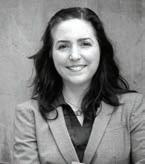
• Rolling enrollment for Junior Kindergarten, Kindergarten, and 1st Grade

Learn more about our school:
Open House: September 2510:00 a.m. – 12:00 p.m.
September Parent Tour
Dates: 9/14, 9/21 and 9/289:00 a.m. – 11:00 a.m.
Contact us to schedule a personal school visit.
There’s a filmmaking renaissance afoot in the Arab world. Young people are discovering the myriad possibilities of the independent film industry. “We are a way for them to breathe,” said Shehadeh. “They can exercise a real voice, whether addressing their own domestic political frustrations or international concerns. In so doing, “they are trying to solve their own problems.”
Ironically, the wars of the last many years increased Americans’ willingness to engage and understand Arab culture. “Soldiers come back and want to make sense of what they experienced,” Shehadeh said. “They ate the food, met and talked to the people, and realized they wanted and needed to know more.” In July, AFF hosted a special showing of two documentaries about the Gaza Flotilla raid at the Roxie Theater. The screening was sold-out to the point of standing room only, with more than 200 people left outside the door. “This has never happened before,” said Jess Ghannam, AFF’s board president. “I believe this is a reflection of an underlying thirst for information about the Arab world that is just not available through mainstream media. People want to know about the culture, the history and most of all, the lives of people from this part of the world,” added Ghannam.
“We are still struggling to see ourselves with our own eyes,” said Shehadeh. Dreams of a deeper cultural realization that would allow a distinctly Arab hero, the poet-war-
see aRaB FiLM page 25
The eclectic mix of more than fifty musical acts, whose styles included alternative, indie, punk, soul, reggae, hip hop, gypsy punk, alt-country, and funk, played to a crowd dominated by twenty-somethings and aging hippies. Twenty-six wineries and thirty-one restaurants had offerings at the festival, with gourmet dishes ranging from ceviche to s’mores.
Outside Lands appealed to the Bay Area crowd with its environmental message. Event staff provided free valet bike parking, paper plates and plastic cups were biodegradable, and separate bins were provided for recycling and compostable material. Instead of selling plastic water bottles, patrons could either buy a metal water bottle and refill it for free, or bring their own and pay for refills. The smallest of the four main event stages was solar-powered.
The various lounges scattered around the festival, sponsored by companies such as Chase, Odwalla, and Intel, provided up and coming artists with the opportunity to play before a festival crowd. Club Crasherz, the Bay Area über-pop party essential, won the opportunity to perform one song at the Odwalla Fresh Tent by winning a music video contest on Facebook. The crowd response was so great that they were asked to return for the second day of the festival to play two more sets. Vocalist PinkMinxx summed up the unique appeal of performing at Outside Lands: “The energy, the diversity…people are engaged. The unexpected love and support: that’s the best part of playing here.”
to beat and can’t afford to make mistakes.
The View asked Hill resident and career expert Mauri Schwartz to answer questions from job seekers. Submit your questions to editor@potreroview.net.
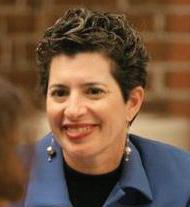
Q: I’ve applied for more than thirty jobs in the past few months, but haven’t received any offers. There’s always something in the job description that doesn’t match with my experience, but that I know I can do if given the chance. How do I convince an employer to hire me in this situation?
A: When applying for a job, it’s essential to put yourself in the shoes of the hiring manager. If you feel qualified for the position, you need to make that clear in every communication to her/him, including your cover letter, resume, emails, and interview. With the hundreds of resumes a hiring manager receives, don’t expect her to figure it out.
If you don’t feel qualified, don’t apply. There’ll be plenty of candidates who are qualified, and adding your resume to the pile just makes the process move more slowly and doesn’t help you.
In a recent SFGate article, “Job Seekers Generalize but Employers Seek Specifics,” Tom Abate discussed the results of a survey of job seekers and hiring managers by TalentDrive. Out of 20,000 employers who were surveyed, 42 percent responded that the recession had increased both the quantity and quality of candidates available. This means you have some tough competition
Of 79,000 active job seekers, 71 percent were pessimistic about their search, feeling they possessed the required skills but weren’t getting hired. In my experience, most job seekers use the same resume for every job application, or at most will tweak it only slightly. When reviewing a job description, determine exactly what skills are needed – including ones that may not be explicitly spelled out in the description –and what kind of person the manager wants to hire. This may require researching the company and hiring manager in advance of writing your resume.
Write your resume so that it spells out what you’ve accomplished that solved the same or similar problems as outlined in the job listing. List your achievements and qualifications in order of priority; it’s essential that they match the employer’s priorities. If you don’t have experience with a specific requirement in a paid position, but were successful doing it in a significant volunteer role, include it, but be sure to note that it was in an unpaid position.
The survey also found that 73 percent of job seekers have had five or more interviews a month since beginning their job search. Of these, 75 percent haven’t received a single offer. As with your resume, your interview should focus on how you can fill the employer’s needs. Make it clear which of your achievements qualify you. Present your case by drawing a parallel with each of the job’s stated requirements. You may have accomplishments of which you are proud, but if they don’t directly apply to the specific job, don’t share them. Don’t confuse the interviewer with extraneous information that muddies the picture you want to present. And don’t waste time telling them how their job will round out your professional experience.
To rephrase President John F. Kennedy’s quote in his 1961 inaugural address, it’s not what the employer can do for you; it’s what you can do for them!
such benefits.
Proposition B, which will be on the ballot in November, addresses not only the City’s escalating pension costs for city employees, but also health care costs. There are two provisions to the measure. The first requires all city employees, including elected officials, to contribute between 9-10 percent towards their retirement pensions. Currently, nearly half of City employees do not contribute towards their pensions. The second requires that city employees contribute more towards their family’s health care costs.
Here are the facts about the costs of health care to taxpayers for the city’s 26,000 employees and 28,000 retirees:
Currently, the City is spending $456 million for city employee and dependent health care each year. According to the City Controller, this number is expected to double within five years.
The Controller estimates that the City’s retiree unfunded health care liability is growing by $300 million annually.
Under Proposition B, all City employees and retirees will continue to receive 100 percent of their healthcare benefits paid. However, instead of the City paying 75 percent of dependent health care costs, all City employees will share 50-50 in the cost of the healthcare for their dependents.
THE WAY IT IS NOW – Under the lowest cost health plan:
• A city worker with no dependents pays nothing for his or her healthcare and the City pays $481.70 per month.
• A city worker with one dependent pays $8.84 per month and the City pays $953.50 a month.
• A city worker with two or more dependents pays $228 per month and the City pays $1,132.54 a month.
• All of these payments into healthcare by city employees are with pre-tax dollars.
UNDER PROPOSITION B:
• A city worker without dependents would still pay nothing.
• A city worker with one dependent would pay, on average, $241.76 per month.
• A city worker with two dependents would pay $439.79 per month.

(Sources: City Controller, Department of Human Resources, Health Service System)
COMPARED to what the average private sector employees receive:
Breakfast All Day • Lunch • Catering
Monday thru Friday 9 am to 5 pm Saturday 10 am to 2:30 pm 632 20th Street • San Francisco, CA 94107 415.558.0556
SFMacMan.com
(415) 821-1792
We need writers, editors, and gossip-mongers. We’ll also take artists, cartoon writers, and photographers. We’ll even consider poets. Little, if any, pay, no benefits, but plenty of love.
• Only 60 percent of San Francisco businesses offer health care benefits for employees.

• Private sector employees with no dependents who do receive health care must pay an average monthly cost of $402 (compared to City employees who contribute nothing) and pay $1,114.58 with dependents.
• And while 100 percent of public sector employees receive retiree health benefits, only 29 percent of private sector employees receive
Keep in mind that the average San Francisco city employee earns $93,000 a year, not including benefits, compared to $46,000, which is what the average private sector employee who works in San Francisco earns.
According to the Health Service System, Proposition B would save the City $83.3 million annually in health care costs. Some of these funds can be used to preserve health programs for vulnerable adults and children who do not have health care coverage.
Even with these changes, City employees will receive a benefit package that is unparalleled in the private sector. More importantly, however, the City’s health care fund will be made more sustainable and the savings from this measure will help preserve the essential services that are relied upon by all San Franciscans.
Opponents of Prop B have said:
In the voter’s guide, the opponent’s argument states that Prop B “cuts health care benefits for widows and children of police officers or firefighters killed in the line of duty.” This is untrue. Under California state law (section 4856 of the Labor Code, passed in 1997) families of deceased public safety officers are entitled to receive health benefits “under the same terms and conditions prior to the death of the employee.”
Proposition B does not change this. In addition, under the federal Public Safety Officers’ Act, widows and children of police officers and firefighters killed in the line of duty receive $275,000.
The opponents have also declared that Proposition fails to “distinguish between low-wage and highly-paid workers.” San Francisco has never based contributions by city employees on the income level of its employees. All employees have always paid the same amount, regardless of their income level. Proposition B does not change this.
The opponents also say that Proposition B “makes San Francisco ineligible for $23 million a year in federal health care reform funding.” This is not true. Nothing in Proposition B makes San Francisco ineligible for federal reimbursement of health care costs.
Proposition B creates a reliable, annual funding stream of support as opposed to “one time” savings measures and uncertain state and federal revenue that San Francisco can’t always count on.
This is why 49,178 San Francisco voters signed the petition to put Proposition B on the ballot.
VOTE YES on Proposition B! For more information, please visit www.sfsmartreform.com or to help on the Prop B campaign, call (415) 905-9100.
Jeff Adachi is the public defender for the City and County of San Francisco.
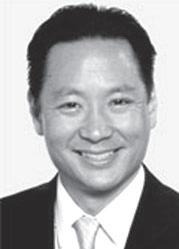
I recently visited Walt Disney’s museum in the Presidio. An ordinary brick building, one of many facing the wide parade ground, the museum has wide steps and a metal railing that leads to a narrow door. A snack bar, stairs to the bathrooms below, and through a hall past glass cases crammed with trophies and awards. Totally uninteresting. The ticket seller, one of the facility’s dozen attendants, dressed in a purple and gold trimmed uniform, described the 300-some videos and various displays available.
My mind was unevenly selective in what I took-in, but this wasn’t the whoop-la Disney World I expected. Nothing captured me about the Disney family, his childhood drawings and experiments with movable parts. Until I saw the World War I ambulance. It was real. I read the notes. Walt had enlisted underage, but forged the date to add a year after his father had signed the papers. And he drove that ambulance. Fa-boom, he had me.
As I continued through the exhibits, I become aware of the amazing sense of the spirit of the times with which Disney was so perfectly in touch with. I could see and feel his storytelling and artistic skills stretching, building one on the oth-
er, then faster, sliding into the next possibility. His characters moved! Spinning, pumping, rotating, the machinery of the industrial age had fused with skilled drawings, birthing a new age in animated art. Much like when, two blinks later, Hewlett and Packard were working with their garage computers on the edge of a digital age that again changed our consciousness. Disney and his artists looked deeply, capturing the sequences of animal movement. They helped us see and feel more fully. As I watched the breath-taking run through the darkening forest, and experienced anew the death of Bambi’s mother, tears from my seven year old self sprang to my eyes.
The exhibits, perhaps unwittingly, displayed another kind of death. Disney’s transition deeper into corporate consciousness; the sleepwalk of money-power. With his innate sense of story, I wondered what it would have been for him to find and pursue Dante through the dark wood to the mount of purgatory.
The synchronous events continued as I left the museum, on my car radio listening to Kris Welch’s KPFA interview with a medical team doing research on how we select memories. We’re not only much less aware than
see DiSNey page 22
Wherever I speak about City College, the well-publicized misuse of public funds in 2005-6 dominates the conversation; people want to know what went on behind the scenes and how such abuses escaped notice of the Board of Trustees.
• How could $10,000 for rent on a college parking lot be diverted to a political campaign—even a campaign for City College improvements?
• How could $28,670 raised by PepsiCo for beverage sales on campus be diverted to the Foundation of City College, a politically active organization?
• How could public funds, $7,000 from the non-profit College Bookstore Auxiliary and $3,000 from a campus coffee shop, end up as political donations?
• Are there other misuses that have yet to be discovered?

I can’t comment on specific charges until the case is settled, but I believe the oversight role of the Board of Trustees needs to be enhanced in order to prevent future questionable expenditures. I don’t believe that any of the current members of the Board had any knowledge of the funds in question, but we are obliged to ask why we were left in the dark about these transactions.
I believe we need to adopt San Francisco’s Sunshine laws to make our records more easily available to the public, the press, and the Trustees. Four years ago I drafted and proposed that similar laws be adopted by the Trustees that would mirror San Francisco’s improved access to records but the administration at City College has been dragging its feet on implementation, presumably to keep its records out of the public eye.
The current standard for open records at City College is the California Public Records Act, which provides minimal access. It is used statewide. It has gaping holes so large that bureaucrats can simply ignore requests, refusing to release documents just because they allege it is not “in the public interest” to release them. In effect, this gives every employee veto power over disclosure of records and has been one of the most misused sections of the CPRA.
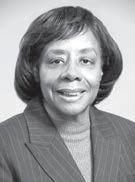
San Francisco voters approved Sunshine (Prop G) in 1999, allowing much stronger public access to records. The Board of Trustees approved similar changes four years ago, and recommended that the various departments and organizations within the institution review their procedures and evaluate the specific changes set forth by the Trustees.
What’s happened since? We know very little. We do know that at one point our attorney advised that the documents were “lost.”
Last month I reintroduced the Sunshine measure and at the next meeting of the Trustees it will be considered. At a preliminary hearing, there were no dissenting comments from my colleagues, i.e., we appear close to agreement.
Sunshine will ban the “public interest” withholding maneuver, and include a 24-hour Immediate Disclosure requirement. We still need to be vigilant, of course, but with this better access, City College of San Francisco will take the lead towards open government among community colleges in California.
Two years of erratic rain have led to severe shortages of cereals, water, and animal fodder in Niger. In eastern Niger – where 90 percent of the population relies on livestock for survival –more than one-third of the cattle may have died. According to pastoralists who’ve lived through recurrent droughts, the current situation is the worst they’ve seen. “I had enough cows, goats and sheep to look after my family. Now, I have nothing and I will have to rely on my two children,” said a 70-year-old man. “This is worse than anything we have known. The whole of Niger is hungry,” said stockbreeder Amadou Aouta.
International nongovernmental organization CARE and Niger’s Association for the Revival of Breeding (AREN) have been driving through remote areas with truckloads of food in search of vulnerable families. “We are heading to places where there are no villages. We are mostly targeting people who are on the move,” said Amadou Adamou, in charge of the CARE caravan. The operation was launched after aid organizations visited the region in July and returned saying it was probably too late to save the cattle, but there was still time to save people.
They’d hoped to bring along animal fodder, a medical team and money to buy weakened cattle at higher than the market price, “but not all partners were willing to quickly change their methods,” said the head of the United Nation’s Office for the Coordination of Humanitarian Affairs (OCHA) in Diffa, Sylvain Musafiri.
Assisting nomadic communities is challenging. “They are far from urban centers, it is expensive to bring aid to remote areas, and it is difficult to reach people who keep moving,” said CARE regional coordinator Ali Salé. “This is a population that is not accounted for in local censuses. We are used to or-
ganizing distributions in villages and not in temporary settlements.”
Constant movement also makes it difficult for malnourished nomadic children to get regular treatment over several weeks. “They go when they need to find some grazing land. They usually leave before the end of the treatment, once their condition has improved,” said Abdulaziz Kimba Garba from Bilabrim health center, near the Chadian border. Bilibrim’s small health center has admitted several malnourished nomadic children since April. More than 22 percent of children under five are acutely malnourished in Diffa.
Stockbreeders’ children have traditionally been protected from malnutrition, as they have access to milk. This may not be true this year. “Dying cattle won’t produce milk. When there’s no milk, nomadic children are left with little to eat,” said AREN’s regional coordinator, Hassan Ardo Ido. More should have been done earlier, but “people react only when they start seeing dead cattle,” said OCHA’s Musafiri. In April, AREN suggested that animal fodder should be placed along corridors used by the pastoralists, “but little was done,” said AREN’s Hassan Ardo Ido.
The crisis was anticipated as early as the end of 2009, but political instability made it difficult for international organizations to respond. According to Livestock Ministry’s Abdul Malik. “Even after the coup [of February 2010], donors had to assess where the new authorities were heading and the authorities had to officially call for help. We had to wait until April or May for support to come. It was already [too] late.”
“This year showed us that we can lose everything,” said the chief of Nguelbeyli, Lamido Moumouni Kabori, whose village has a population
VeNeTiaN from page 18
After hosting the conference that led to the birth of the United Nations, new owner Ben Swig engaged the famous decorator Dorothy Draper to restore the Fairmont to its position as the jewel in the crown of San Francisco’s Golden Age. For more than four decades hotel guests and locals alike dined, danced, and delighted in big name entertainment. Ernie Hecksher and his orchestra came for a limited engagement, and never left, becoming the official band for the Venetian Room. While the room’s dancing and dining are gone forever, tireless entrepreneur Levinson is returning the beautiful room to its position as the City’s premiere entertainment venue.
On November 21st, Bay Area Cabaret continues with two con
certs. At 3 p.m. three-time Tony Award nominee – South Pacific , The Pajama Game, Light In The Piazza – Kelli O’Hara makes her San Francisco concert debut showcasing Wonder in the World, her recent album of musical theatre, jazz, pop and originals. At 7 p.m. that same evening Adam Pascal & Anthony Rapp kick-off their international Adam and Anthony Live tour. The pair, who co-starred in the original Broadway and London productions of Rent, as well as in the show’s film and touring versions of the show, will perform an electric and acous
tic concert with music from Spring
Awakening, Aida, Rent, and other familiar Broadway music, along with a mix of fresh interpretations of Sondheim, pop and original songs.
On March 13th at 5 p.m. husband-and-wife team jazz guitarist John Pizzarelli and Broadway singer Jessica Molaskey will present their recent show from New York’s renowned Café Carlyle. The season continues with Anika Noni Rose on May 1st at 5 p.m., when the former American Conservatory Theatre graduate, Tony Award winner – Caroline or Change – and star of the movie Dreamgirls makes her San Francisco solo concert debut. She’ll be appearing in the upcoming Tyler Perry film version of Ntozoke Shange’s For Colored Girls Who Have Considered Suicide When The Rainbow Is Enuf. The Venetian Season will conclude on May 14th at 8 p.m. when award-winning Broadway vocalist Lillias White performs My Guy Cy, a tribute to legendary songwriter Cy Coleman.
This writer – who worked at the Venetian Room in the mid-1970s, catching an eclectic mix of acts like Ginger Rogers, Alexis Smith, Marilyn McCoo & Billy Davis – couldn’t be more pleased at the return of the venerable venue.
For more information, visit bayareacabaret.org; purchase tickets at City Box Office: 415.392.4400. Special Bay Area Cabaret discounts for dining and accommodation at the Fairmont Hotel are available.
www.potreroview.net
DiSNey from page 21
we think we are, but we even disregard strong sensory data when we’re concentrating. In studying groups given the task of counting comments made by people wearing white in a larger group wearing different colors, a man in a gorilla suit walked into the room for ten seconds, then out. Only 40 percent of the observ-
ers noticed. Some refused to believe it had happened until they saw the filmed session. It’s hard to accept but, largely, we see only what we are prepared to see.
The spirit – or mind-set – of an age is often not seen until it’s past. Still, there’s fascination in taking another look, when possible. I may even go back to the Disney Museum to see what I didn’t see, and wonder whether screens are sometimes doors.

For more information visit our website at: www.hunterspointcommunity.com
Register early with – space is limited.
Registration: Tim at 415.344.8855 or Tim.Orozco@lennar.com

REMEMBER , if you are a SFRA Residential Certificate of Preference holder you have top priority in the sale of the new homes at the HP Shipyard. Certificates of Preference were awarded to households previously displaced by Redevelopment Activity in Hunters Point and the Western Addition. If you think you are entitled to the Certificat e, please call (415) 749-2432 or visit www.sfraaffordablehousing.org.
Day Instructor Type of Class Times Fee
MondayTim Hatha 9:00amBy Donation
MondayAnneVinyasa Flow6:30pmBy Donation
TuesdayLauraHatha 9:00amBy Donation
TuesdayDanielHatha 6:45pmBy Donation
WednesdayPninaKripalu 9:00amBy Donation
WednesdayGinnyHamsa 6:30pmBy Donation
ThursdayMelanieHatha 9:00amBy Donation
ThursdayPninaYoga & Sound7:00pmSliding Scale $10-$15
FridayAnneYin Yoga9:00amBy Donation
SundayMarilynPre-Natal10:30amSliding Scale $10-$15
In April 2010, Potrero Hill’s Divine Essence Yoga, celebrated its first birthday and officially became a predominantly donation based studio. The founders of Divine Essence are Integral Yoga trained instructors and thus come from a lineage tradition that emphasizes selfless service (Karma Yoga). In keeping with their commitment to serve the community and make yoga more affordable, 95% of the classes are by donation. www.divineessenceyoga.com
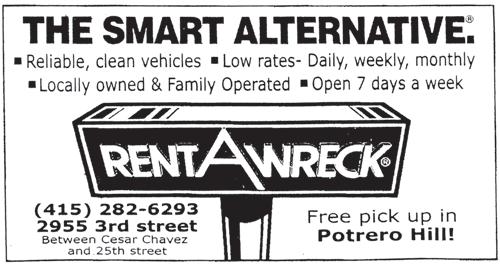 By Steve Moss
By Steve Moss
Editor’s note: To diversify our offerings, the View is interested in publishing works of short fiction, less than 1,000 words. As far as we know the piece below is the first fiction story the paper has published in the last ten years. Submit yours to editor@potreroview.net
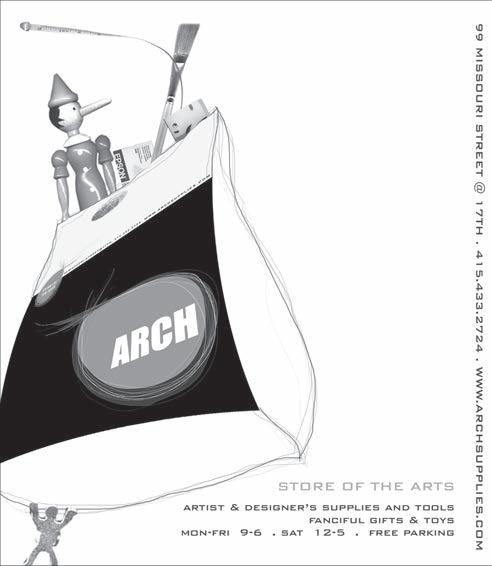
“I haven’t spoken to her in twenty-two years, and I don’t intend to start now,” my mother proclaimed, scrubbing at the already-clean counter to emphasize her point.
“But Mom, it’s a silent retreat. You won’t be talking to her. In fact, you’ll be encouraged not to,” I said to the back of her head. Her hair was still mostly black with only a few specks of gray.
“Yes, well, as long as she doesn’t try talking to me. I’m not having any of that.”
I’d make the mistake of telling my mother about a retreat I was going on with my Aunt Gen. Knowing of my interest in Buddhism, Gen found a course for me to take at Spirit Rock, a local meditation center. She offered to pay the fee and, after we talked about it, asked if she could come along. I was delighted
to spend time with my aunt, who’d taken up Spanish at sixty and tap dance lessons at sixty-five. After I told my mother, she insisted on joining us. Not because of any interest in Buddhism, but to make sure her older sister didn’t spend any more time with me than she did. Still, she wanted to make it clear that while she was going to the retreat, she would not be speaking to my aunt.
“Mom, why don’t you talk to Gen?”
“Because of what she did to me.” She turned to face me, her lips clamped shut.
I’d asked her before and knew I wasn’t going to get any information. Once, after badgering her for more than a week, she’d told me her grudge had something to do with borrowed money. Gen told me that her husband Sam had lent my father a few hundred dollars, which he’d never repaid. She claimed it was no big deal and didn’t know why my mother still made a fuss about it. But I knew Sam, a gruff, selfmade man with a long memory. If money was involved, Sam would not have let my father or mother forget about it.
Since I’d initially agreed to go with Gen, I decided to drive with her. Mom said that was fine, but of course, she wouldn’t think of being in the same vehicle as her sister. As
Gen and I slid into Spirit Rock’s parking lot, my mother slowly rolled in beside us.
“Hello, Sarah,” Gen called out, as we got out of our respective cars.
“Hmmmm,” my mother nodded and glared at me.
The meditation center was cool and cozy. A few dozen students were already inside, shoes off, sitting silently. Gen and I picked out some pillows and found a place to sit. My mother did the same but found a spot as far away from us as she could while still maintaining a clear line of sight. The teacher rang the bell twice and instructed us on the day’s activities: silent sitting, silent walking, silent eating. I looked across the hall at my mother, who was silently frowning.
The morning passed quickly, and in my meditation I lost track of my aunt and mother, and sometimes, for a few short moments, even myself. I was surprised when, at lunch, my mother placed herself at our table, directly across from Gen. Each of them chewed their food fiercely, their eyes shooting needles across the table. Then, Gen stuck out her tongue at my mother.
“Oh, oh,” I thought, “Here we go.” I silently prayed that whatever happened wouldn’t be too loud.
My mother straightened herself in her seat and carefully placed her fork next to her plate. Using her hands, she pulled her mouth up and down and pointed her eyes sideways while wiggling
her ears. Gen burst out laughing. My mother giggled. Both of them continued eating, flashing shy smiles the rest of the meal. Later, during walking meditation, I saw them slowly and silently stepping, arm-in-arm. From a distance they looked like two graceful birds dancing together. At the end of the retreat, as my aunt and I were putting away our pillows, my mother walked passed us without so much as a glance.
“Wasn’t that a nice day, Sarah,” Gen called after her.
“Hmmmmmmh,” my mother responded, without turning her head. She kept on walking out of the center and into the parking lot.
“Mom, Mom,” I called, as I ran after her. “I thought you and Gen made up.”
“No,” my mother bit off the words, “I’m still not talking to her.”
“But what about lunch and walking with her?”
“That’s not talking to her,” she said, but for a second, I thought I saw the shadow of a sly smile skip across her lips. She got into her car and drove away.
To this day, my mother won’t talk to her sister. But every month, long after I’d lost interest in meditation or Buddhism, my aunt and mother meet at Spirit Rock for a silent retreat. I know this only because my aunt told me. Mom has never mentioned it. And, for now at least, it seems best that I keep silent.

Tuesday 10 am - 8 pm, Wednesday 12 noon - 8 pm
Thursday 10 am - 6 pm, Friday 1 pm - 6 pm
Saturday and Sunday 1 pm - 6 pm
Monday CLOSED

Oral History Workshop. Basya Petnick hosts an oral history workshop, beginning with a discussion of this year’s One City One Book selection, Zeitoun, by Dave Eggers, and Voices from the Storm: The People of New Orleans on Hurricane Katrina and its Aftermath. September 25, 3:30 to 5:30 p.m.
Baby Rhyme and Play Time. Tuesdays, September 7, 14, 21 and 28, 1:15 p.m. For infants up to eighteen months old and their caregivers.
Family Storytime, featuring stories, songs and rhymes. For children from birth to five years old and their caregivers. Thursdays, September 2, 9, 16, 23 and 30, 10:30 to 11 a.m. and 11:15 to 11:45 a.m.
Fun Flicks is offered every second Wednesday of the month, and includes short films based on children’s books and stories. September 8, 6:30 to 7:15 p.m. For children ages five and older.
Rip the Page! Adventures in Creative Writing. Karen Benke, Rip the Page! author leads experiments in creative writing to strengthen the “write-side” of the brain, with wordplay, open-ended experiments, and do-it-yourself definitions. Christopher’s Books will be onsite selling Benke’s book. September 11, 4 to 5:30 p.m. For ages five and up. Space is limited; visit the library or call to make a reservation: 355.2856.
La Familia Peña-Govea: Music of Mexico. Traditional accordion-based Mexican and Tex-Mex songs and dance. September 25, 2 to 3 p.m. For all ages.
Potrero Branch Library programs are held in the second floor meeting room.
San Francisco Public Library has added Mango Languages and PowerSpeak to the collection of databases available through our website. To access these resources from the homepage www.sfpl.org, click on the eLibrary tab, choose Articles & Databases from the drop down menu, and select Language Learning from the Database Category menu. Login with your library card number and pin, and you’ll be asked to register and create a login for your chosen course. You’ll need to have certain add-ons installed on your computer, including JavaScript and Flash.
Mango offers basic courses in Arabic (Levantine), Chinese (Mandarin), Dari, Farsi, French, German, Greek, Hebrew, Hindi, Irish, Italian, Japanese, Korean, Pashto, Portuguese, Russian, Spanish, Tagalog, Thai, Turkish, Urdu and Vietnamese as well as complete courses in Chinese (Mandarin), French, German, Greek, Italian, Japanese, Portuguese, Russian and Spanish. There are fifteen ESL courses to choose from. Mango teaches conversation skills using real-life situations.
PowerSpeak offers Spanish, French, Mandarin and German, and ESL Spanish. Each program simulates gradual immersion through a series of stories, activities and interactive tools. The Potrero Branch also offers books, CDs and DVDs for language learning. Additional materials, including adult and children’s fiction and non-fiction titles in many foreign languages, can be requested from the Main Library’s International Center or other library branches to be sent to the Potrero Branch for pick up.
The Potrero Neighborhood Library Campaign Committee meets monthly to discuss fundraising strategies and progress. If you’d like to join the committee, contact Mary Abler, Friends of the Library: 626.7512, extension 107; mary.abler@friendsssfpl.org.
FOREIGN AND DOMESTIC AUTO REPAIRS


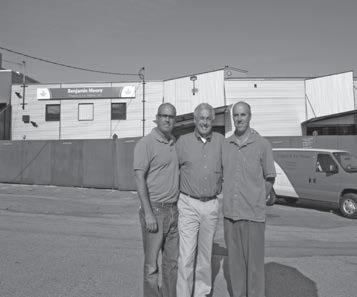
GOLD SHIELD SMOG CHECK STATION


TEST ONLY & REGULAR SMOG TESTS
12 MONTH WARRANTY ON ALL REPAIRS



results from the Pearson Foundation. Many preschool-age children who don’t enter school until kindergarten have illiterate or English-speaking parents, and depend on the public school system to introduce reading and other educational skills. Yet according to Deckenbach, parents should be involved in their child’s learning well before they turn four.
Potrero Hill Head Start, part of the Head Start system of federallyfunded early education initiatives, is located adjacent to the Potrero Hill Neighborhood House, on Carolina Street. It caters to income-eligible children who predominately live in the Potrero Annex-Terrace complex, and who participate in the program at no cost. According to director Denise Larson, almost 30 percent of her students are Spanish-speaking, prompting Head Start to create a dual-language program. “We definitely see the children much more ready for kindergarten,” Larson said. “There is a need for low-income children to have preschool. The alternative is staying at home watching TV.”
Funded in part by the City and County of San Francisco, Jumpstart provide mentoring and instills reading habits in preschoolers. Part of AmeriCorps, Jumpstart brings more than 800 college students and other volunteers to more than 30 San Francisco neighborhood classrooms located in the Mission, Visitation Valley, Bayview-Hunters Point, and elsewhere. According to Jen-
nifer Curran, Jumpstart’s western regional senior program director, most of San Francisco’s participants come from Spanish- and Cantonesespeaking homes. “We cover strategies on how to enjoy literacy experiences with their children if parents aren’t comfortable in English,” Curran said. “We teach how to read a book without reading every word on the page, but we stress enjoying the experience with their children and enjoying the love of a book.”
Not all households in Potrero Hill and other neighborhoods access literacy services. According to Larson, families rarely come to her; she actively recruits within the community to give young children the opportunity to participate. “With this population, we have to go to them and tell them we have these services. We go to the library, public housing, General Hospital pediatrics, the [Women, Infant and Children] office or welfare office,” she said.
According to Deckenbach, even without access to a formal program there are inexpensive, easy activities families can use to foster a readingfriendly environment. “Talk to your kid and sing and read,” she said.

For more information about the preschool resources mentioned in this article visit The Reading Tree, thereadingtree.net; Potrero Hill Head Start, sfheadstart.org; and Jumpstart San Francisco, jumpstartsf.sfsu.edu. The Potrero Hill branch library, located on 1616 20th Street, is another free, public resource for families looking for support and programming for reading and literacy.
rior, to be understood and embraced will have to await a future when eyes on both sides have matured.


This year’s festival will include more than forty features, documentaries, and shorts, along with panel discussions, before and after question and answer sessions, and a special filmmakers’ dinner. Although there will be the requisite pieces on the Palestinian-Israeli conflict, many films will demonstrate that Arabs are neither frozen within nor live dictated by the ebbs and flows of this single issue. Their lives go on, in rich multi-technicolor.
Noura, in Fiasco, is a single woman who is engaged to her gay American best friend so she can stay in the United States and fulfill her dreams as an artist.
liopolis presents a vision of modern urban dweller angst not too different from recent tribute vignettes to cities like Paris or New York, where the metropolis’ particular history and feel are as much a character in the story as are the people. Ahd Kamel’s Shoemaker tells the tale of an Iraqi man’s life, which is left in turmoil as a result of being wrongfully detained for two years.
“Humans use storytelling to share their ideas; there is not a single culture that does not tell stories,” asserted Shehadeh. Arabs love and laugh, relish a well-made dinner, take delight in their children, get frustrated by their quirky friends and feel embarrassed by their parents, just like anyone else in the world.

For more information about the Arab Film Festival: http://arabfilmfestival.org/.

Bayview Police Station captain’s community Meeting is held on the first Tuesday of each month in the Bayview Police Station Community Room at 201 William Street. Enter through the Newhall Street door. Next meeting: September 7th, 6 p.m.
Dogpatch Neighborhood association usually meets the second Tuesday of each odd-numbered month. Next meeting September 14, 7 to 9 p.m., 654 Minnesota Street.Voting membership is open to anyone living in or owning property or a business in Dogpatch. For more information or to join/pay online: mydogpatch.org.
Mckinley Square community group is a communication and discussion group regarding events and activities, clean up days, improvement and beautification, and other concerns, such as crime in the neighborhood. Next board meeting: October 13th, 6:30 to 8 p.m. at Downtown High School, 693 Vermont Street. Board meetings open to the public. Visit www.mckinleysquare.com for more information.

Potrero Boosters meets the last Tuesday of each month at 7 p.m. (social time begins at 6:30 p.m.) in the wheelchair-accessible Game Room of the Potrero Hill Neighborhood House, 953 De Haro Street. For more information: www.pots.org or email president@potreroboosters.org. Next meeting: September 28th.
Potrero Hill association of Merchants & Businesses meets the second Tuesday of each month at 10 a.m. at Goat Hill Pizza, corner of Connecticut and 18th streets. Visit www.potrerohill.biz or call 341.8949. Next meeting: September 14th, 10 a.m.

Potrero Hill Democratic club meets the first Tuesday of each month at 7 p.m. at the Potrero Hill Neighborhood House, 953 De Haro Street. For more information: 648.6740, www. PHDemClub.org. Next meeting: September 7th, 7 p.m.
Potrero Hill garden club usually meets the last Sunday of the month at 11 a.m. for a potluck lunch in a local home or garden. Discussions are held on organic, edible, or ornamental gardening appropriate for Potrero Hill’s microclimate. Call 648.1926 for details.
Starr king openspace The Starr King Openspace Volunteer Work Day is held on the 3rd Saturday of each month, excluding holidays. Meet your neighbors, get some fresh air, and come care for this unique oasis of nature in the heart of the big city. Next Volunteer Work Day: September 18th, 9 a.m. to noon. Meet on the Openspace along Carolina Street, across from Starr King Elementary School. The next Starr King Openspace Board of Directors Meeting is on Wednesday, September 22nd, 6:30 p.m. at the Potrero Hill Neighborhood House, 953 De Haro Street. Board meetings are open to the public. While time will be set aside for public comment, the Board may reserve some agenda items for closed session discussion. For more information: www.starrkingopenspace. org; email the Board of Directors at starrkingboard@gmail.com; voice mail 415-6336-SKO (756).

On the Occasion of the College’s Diamond Jubilee, You are invited to celebrate the Grand Opening of The NEW Multi-Use Building on the Ocean Campus made possible by your favorable bond measure vote.
Friday, September 24 at 5 p.m. followed by“The Best of Jazz” Concert in the Diego Rivera Theatre at 7 p.m.
SHoRT cuTS from page 3
ordered an investigation into the 13.5 percent return on equity (ROE) it authorized for the 400 megawatt (MW) Trans Bay Cable project, a 53mile underwater transmission line that runs underneath the bay from the City of Pittsburg to Dogpatch. FERC’s move followed complaints by the California Public Utilities Commission (CPUC) and the California Department of Water Resources that the ROE was excessive, particularly given that project costs ballooned from $300 million to $530 million in the five years since the ROE was approved. According to the CPUC, a 9.7 percent ROE would be more appropriate. Trans Bay Cable LLC continues to work to address technical difficulties related to a faulty circuit-board component, and hopes to open the line by the end of the year, with testing scheduled to be completed this month. The California Independent System Operator has agreed that the Potrero Power Plant’s largest unit, 3, can close once the cable comes on line. Potrero’s remaining diesel-fired units— 4, 5 and 6—will remain in service until a Pacific Gas and Electric Company transmission project is finished later this year. If Unit 3 doesn’t close, a regulation approved in May by the State Water Resources Control Board would require Mirant to install a new closed-cycle wetcooling system or to show a drastic reduction in the killing of aquatic life caused by the facility’s current cooling practices.
Last month the View received an angry voicemail from an unnamed caller – only identified as a long-time Hill resident – accusing the paper of not delivering the August issue to Chiotras Grocery because the store’s owners are distributing literature for District 10 Board of Supervisor candidate Tony Kelly, as opposed to the View’s publisher, Steve Moss In fact, in honor of the paper’s 40th anniversary, the August View was hand-delivered to 14,000 residents in and near Potrero Hill – at an additional cost of more than $2,000 for printing and delivery – with normal distribution reduced mostly to the paper’s boxes. Given that the Moss for District 10 Campaign paid to advertise in the View, it would seem counterproductive to withhold the paper from eager readers…As the political season heats up, look with a critical eye on rumors about any candidate that can’t be traced back to the truth.
NigeR from page 21
of 2,000. He said weakened animals could recover in a month, but families who have lost most of their cattle have little to fall back on, as normal reproduction will not grow back the herds. “People are now wondering what the future will hold. We cannot rely on stockbreeding anymore.”
View publisher Steve Moss worked for the U.S. Treasury Department in Niger from 2006 to 2008.
ATTENTION ARTISTS Goat Hill Pizza is looking for local artists to show their work at the restaurant. Please call Alicia Wong at 415.641.1440 if you are interested.
GRAPHIC DESIGN/PROMOTION FOR YOUR BUSINESS Web sites new and updates. Ads, Logo/Identity, Display, Brochure, Sell Sheet, Flash Animations, more. On the Hill. www.jcarpinelli.com 415 2825516.
SENIORS (60+) DON’T EAT ALONE Join us for daily lunch and add to your social life. Mon-Fri, hot nutritious meals--your first time with us you get a free lunch! Bingo, cards, birthday celebrations, spe-
cial events, and other activities. For more information, call Dolores Maghari at 415.826.8080. PH Neighborhood House, 953 De Haro St.
education
TUTORING Get help with tests & homework. See www.myStudyBuddy. org. Jane Radcliffe, M.A., CA Credential #150007. 415.586.4577.
garden Services
LANDSCAPE DESIGN Growsgreen Landscape Design offers a custom design for your garden. Award winning designs, featured HGTV designer. Porfolio: www. growsgreen.com, beth@growsgreen.com 415-336-9829.

TOM’S PLUMBING Tom has been satisfying Potrero Hill customers for over 30 years. All plumbing needs handled promptly and efficiently at a very low cost. Keep it local and call Tom Keats: 415-8243538.
HANDYMAN EXTRAORDINAIRE! 20 years experience repair, remodeling. Elec, plumbing, light fix. Anything doors! Double-hung windows. Cabinetry, Decks, staircases MMcQuate@gmail.com. Mike (415) 308-2380.
180 COLOR & DESIGN Our philosophy at 180 Degree Design is to use color to transform home and business spaces in ways that work for you. Choosing the right paint color can be extremely frustrating for many people, we can help you avoid costly mistakes and achieve the best results for the interior or exterior color of your home or business. Contact us 415285-3014 www.180color.com.
CLEANING PROFESSIONAL 25 years Experience. Apartments, homes, or offices. Roger Miller, 415-664-0513 or 794-4411 9a-5p.
DO YOU NEED HOUSECLEANING? We will do it for you. Call Sara & Marco 4153108838.
Rentals
SPACIOUS AND BEAUTIFUL Furnished guest garden apartment. Private. 1/2 blk. to restaurants. Non-smoking. 2 adults only.
2 night minimum. 415-861-3208.
VACATION RETREAT FOR POTRERO HILLIANS. Calistoga/St Helena area 3 bdrms 2 baths sleeps 6 (max). Lrg decks w/ views of stream woods & meadow. Frplace w/wood, 30 acres trails, all-year stream. Dogs OK. 3 night wkend=$500 Week=$900. Discount for repeat guests. Photos: spot02. googlepages.com. 415.647.3052.
SPECIAL OCCASION COMING UP? Host your celebration at Slovenian Hall! Great rates and convenient location on Potrero Hill, just off Hwy 101. Ideal for birthdays, graduation or wedding receptions. Capacity up to 250. Space also available for seminars, meetings or classes. Short or long term rentals available. Call 864-9629 or email slovenianhall@gmail.com.
CHARMING GARDEN APARTMENT One BR, 2-night minimum. Fireplace, patio, deck, French doors. 415.641.4488.
ACTIVSPACE FOR ART, HOBBY & BUSINESS. Rent from $395 a month utilities included. Private, Secure, Affordable, 24/7 access. Call Tama for further details 415355-1515.
Technology Services
COMPUTER PROBLEMS DRIVING YOU BUGGY? Problems fixed! 25 years of industry experience. Personal IT consulting to small businesses or busy professionals. We can install and/or help shop for computer/network/printer or setup/ troubleshoot wireless networks. If you’re not technical, don’t worry we are. Rob 415.935.3305 rob@sfcomputech.com.











